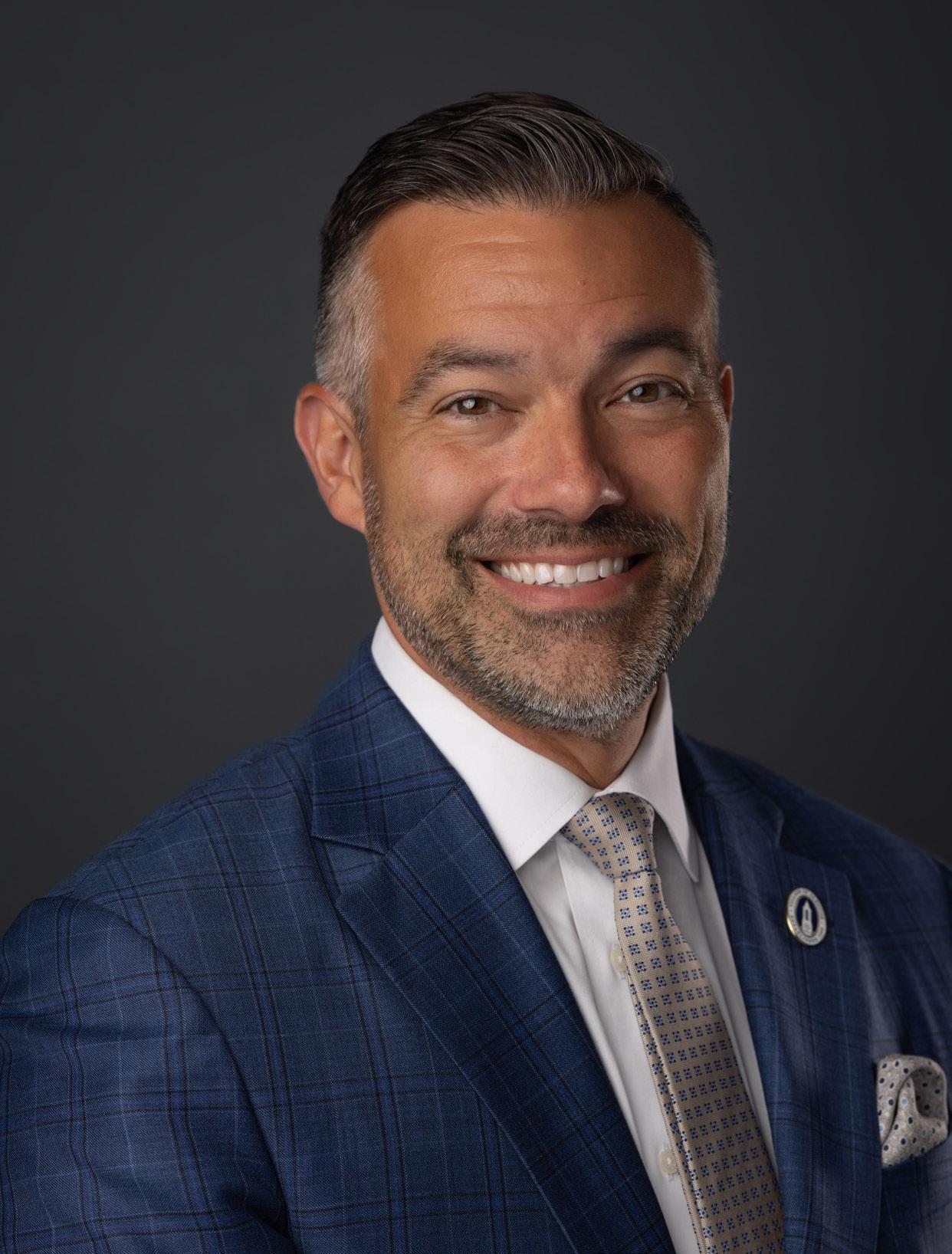

COUNCILMANAGER RELATIONS
Philip A. Kiraly, ICMA-CM Village Manager Glencoe, Illinois, USA



FEATURES
Making Big Strides in Advocating for Council-Manager Government
Lessons learned from the state of Illinois
Philip A. Kiraly, ICMA-CM
Behind the Scenes: Portland’s City Government Transformation
Voters in Portland, Oregon, overwhelmingly approved major changes to their city government, starting a two-year sprint to create geographic districts, launch ranked-choice voting, and build a centralized organizational structure.
Michael Jordan
22 A Disruptive Elected Official
What can the chief executive do to help the governing body function well and bring the outlier into the fold?
Jan Perkins, ICMA-CM, and Keith Metzler
What Aristotle Can Teach Us About Municipal Governments
Insights from ancient political philosophy for modern local governments
Michael Huling
The Value of Work Plans
Give yourself back some time!
Jan Perkins, ICMA-CM, and Tamara Letourneau, ICMA-CM
Why Don’t They Trust Us?
With the erosion of trust in local government over recent years—and the nasty side effects that brings with it—it’s incumbent upon us to be intentional with our efforts in reversing the trend.
Rick Davis, ICMA-CM
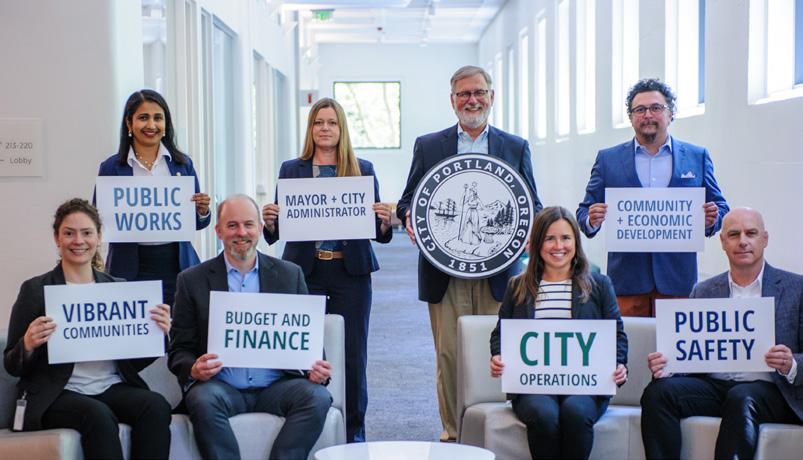
2 Executive Director’s Corner
Spreading the Word About the Value of Professional Management 4 Ethics Matter! Meriting the Public’s Trust 8 A Word About Leadership Leading Through Uncertainty
Public Safety
FirstNet: Critical for First Responders 12 Insights
A Template for Effective Board Meeting Discussions
44 Assistants and Deputies
The Ethical Tightrope of Public Leadership 46 Time Management Beware the Trap of Dousing Fires and Chasing Squirrels
48 Perspectives Strategizing and Embracing Change
Your Organization
51 Tech Updates Technology Policies for Your Community 52 ProfessionalServices Directory

Part two of our series on practical decision-making strategies for city/county managers
Jon Quinday, ICMA-CM
City/County

Spreading the Word About the Value of Professional Management
ICMA’s role in promoting the council-manager form of government
BY JULIA D. NOVAK, ICMA-CM
Our profession has a proud tradition of bringing ethical, professional management to cities and counties. That said, the general public often has little awareness of the value that council-manager government brings to their communities.

JULIA D. NOVAK, ICMA-CM, is executive director of ICMA.
For that reason, ICMA and state associations are often called upon to meet with community groups that are interested in adopting or retaining council-manager government. And when the public understands the difference that professional management brings to their community, more often than not, they choose it.
People voting for councilmanager government don’t want cronyism in their local government. They also recognize that if they have a structure that gives the mayor the CEO role, there’s no assurance that every person elected as mayor will possess the essential expertise and
When the public understands the difference that professional management brings to their community, more often than not, they choose it.
Public Management (PM) (USPS: 449-300) is published monthly by ICMA (the International City/County Management Association) at 777 North Capitol Street. N.E., Washington, D.C. 20002-4201. Periodicals postage paid at Washington, D.C., and at additional mailing offices. The opinions expressed in the magazine are those of the authors and do not necessarily reflect the views of ICMA.
COPYRIGHT 2025 by the International City/County Management Association. All rights reserved. Material may not be reproduced or translated without written permission.
REPRINTS: To order article reprints or request reprint permission, contact pm@icma.org.
SUBSCRIPTIONS: U.S. subscription rate, $60 per year; other countries subscription rate, $155 per year.
Printed in the United States.
Contact: 202/289-4262; subscriptions@icma.org.
POSTMASTER: Send address changes to Public Management, ICMA, 777 N. Capitol Street, N.E., Suite 500, Washington, D.C. 20002-4201.
ARTICLE PROPOSALS: Visit icma.org/writeforus to see editorial guidelines for contributors. For more information on local government leadership and management topics, visit icma.org.
skills. They like the council-manager structure because the mayor and elected officials work together to set goals, pass legislation, and hire a well-qualified manager to oversee services and staff. Separating politics from management helps the organization focus on results. One way that ICMA supports these efforts is to provide financial and staff support to grassroots organizations. The ICMA Future of Professional Management Fund helps pay for mailers, materials, and presentations during form of government campaigns. In the last five years, this support has led seven communities to adopt the plan, eight communities to retain the plan, and two communities to strengthen management in their charters. Whether the plan is retained in a small city like Maywood, Illinois; or in a large city like Austin, Texas; the key factors are community engagement and the diversity of support.
Public Management (PM) icma.org/pm
ICMA
777 North Capitol Street, N.E. Suite 500 Washington, D.C. 20002-4201
EDITORIAL OFFICE: pm@icma.org
ADVERTISING SALES: Justin Wolfe, The YGS Group 717-430-2238 justin.wolfe@theygsgroup.com
ICMA MEMBER SERVICES: 800.745.8780 | 202.962.3680 membership@icma.org
Creating and Supporting Thriving Communities
ICMA’s vision is to be the leading association of local government professionals dedicated to creating and supporting thriving communities throughout the world. It does this by working with its more than 13,000 members to identify and speed the adoption of leading local government practices and improve the lives of residents. ICMA offers membership, professional development programs, research, publications, data and information, technical assistance, and training to thousands of city, town, and county chief administrative officers, their staffs, and other organizations throughout the world.
Public Management (PM) aims to inspire innovation, inform decision making, connect leading-edge thinking to everyday challenges, and serve ICMA members and local governments in creating and sustaining thriving communities throughout the world.

In this month’s first feature, “Advocating for Council-Manager Government,” author Philip Kiraly emphasizes the importance of helping voters grasp the difference between elected and appointed leadership. ICMA resources give a clear description of the distinct roles and powers of a mayor versus a professional manager. They also provide research on the ways that council-manager governments increase efficiency, control costs, and improve performance compared to other systems.
As Kiraly explains, advocating for the council-manager form of government is a team sport. His article highlights how ICMA and the Illinois City-County Management Association (ILCMA) joined forces to advocate for the plan in nine communities. He adds that too few ICMA members are aware of the association’s advocacy efforts.
In an era when loud voices often dominate political debate, it’s more important than ever to have an educated electorate.
“Before joining ILCMA’s board and later becoming president, I had limited understanding of the depth and
PRESIDENT
Tanya Ange*
County Administrator Washington County, Oregon
PRESIDENT-ELECT
Michael Land*
City Manager
Coppell, Texas
PAST PRESIDENT
Lon Pluckhahn*
City Manager
Vancouver, Washington
VICE PRESIDENTS
International Region
Colin Beheydt
City Manager Bruges, Belgium
Doug Gilchrist
City Manager
Kelowna, British Columbia, Canada
Lungile Dlamini
Chief Executive Officer
Municipal Council of Manzini, Eswatini
Midwest Region
Michael Sable*
City Manager Maplewood, Minnesota
Jeffrey Weckbach
Township Administrator Colerain Township, Ohio
Cynthia Steinhauser*
Deputy City Administrator Rochester, Minnesota
Mountain Plains Region
Dave Slezickey*
City Manager The Village, Oklahoma
Pamela Davis
Assistant City Manager Boulder, Colorado
Sereniah Breland
City Manager Pflugerville, Texas
Northeast Region
Dennis Enslinger
Deputy City Manager Gaithersburg, Maryland
Steve Bartha*
Town Manager Danvers, Massachusetts
Brandon Ford
Assistant Township Manager
Lower Merion Township, Pennsylvania
Southeast Region
Jorge Gonzalez*
Village Manager
Village of Bal Harbour, Florida
Eric Stuckey
City Administrator Franklin, Tennessee
Chelsea Jackson
Deputy City Manager
Douglasville, Georgia
West Coast Region
Jessi Bon
City Manager
Mercer Island, Washington
Nat Rojanasathira*
Assistant City Manager Monterey, California
Elisa Cox*
Assistant City Manager
breadth of ICMA’s advocacy work. What I’ve since seen firsthand is the power of a strong partnership: ILCMA’s dedicated network of senior advisors (seven in all) combined with ICMA’s national platform to create a model for effective local advocacy.”
A top priority for me is to raise awareness of the value of professional local government management. Once people understand the manager’s leadership role in bringing integrity, expertise, and accountability to their communities, the nature of the debate changes. In an era when loud voices often dominate political debate, it’s more important than ever to have an educated electorate. Working together with our state partners, ICMA ensures that grassroots campaign leaders have the speakers, videos, and materials they need to succeed. With your donations, ICMA’s Future of Professional Management Fund will continue to develop the content and resources that are essential to advocate for professional management.
Rancho Cucamonga, California
*ICMA-CM
** ICMA Credentialed Manager Candidate
ICMA Executive Director Julia D. Novak, ICMA-CM
Managing Director, Lynne Scott lscott@icma.org
Brand Management, Marketing, and Outreach
Senior Managing Editor Kerry Hansen khansen@icma.org
Senior Editor Kathleen Karas kkaras@icma.org
Graphics Manager Delia Jones djones@icma.org
Design & Production picantecreative.com
Meriting the Public’s Trust
The local government management profession is on the front lines of protecting the values of democracy every day, and for well over 100 years, ICMA’s members have answered this call.
The ICMA ethics program completed a three-part webinar series for members in late June. These free events were in response to member questions frequently asked this year and included resource guides for additional in-depth information.
The event topics included ethical leadership in communications, balancing political neutrality with personal advocacy, and local government’s commitment to democracy. The first two were recorded and available on-demand through ICMA’s Learning Lab. The public trust session was not recorded to encourage members to be candid, and this article summarizes it.
Local Government’s Commitment to Democracy
JESSICA COWLES is ethics director at ICMA (jcowles@icma.org).
ELIZABETH DOLL is director of braver politics at Braver Angels.
CHANTAL COTTON GAINES is deputy city manager of Palo Alto, California, USA.
CAMILLA POSTHILL CONNERS is ethics senior program manager at ICMA.
The Partnership for Public Service surveyed Americans for their 2024 report, “The State of Public Trust in Government.”1 The report confirms what we have known for some time—the lack of public trust in the public sector continues to grow: 29% say democracy is working in the United States today compared with 68% who say it is not working, and only 15% believe the government is transparent.
Further data speaks to this disturbing trend: Pew Research conducted a recent survey that asked, “Who trusts the government to do what is right?” The declining numbers speak to this crisis: in 1963, 77%; in 1985, 40%; and in 2022, 20%.
The ethical imperative of this situation is made clear in Tenets 1 and 3 of the ICMA Code of Ethics that apply to every ICMA member:
Tenet 1. We believe professional management is essential to effective, efficient, equitable, and democratic local government.
Tenet 3. Demonstrate by word and action the highest standards of ethical conduct and integrity in all public, professional, and personal relationships in order that the
BY JESSICA COWLES, ELIZABETH DOLL, AND CHANTAL COTTON GAINES WITH CAMILLA POSTHILL CONNERS
member may merit the trust and respect of the elected and appointed officials, employees, and the public.
Election Systems as a Crucial Example
Elizabeth Doll is the director of braver politics at Braver Angels, a nonprofit organization working to bring Americans together to bridge the partisan divide and strengthen the U.S. democratic republic. They believe the current division in our country damages our communities, disrupts our families, and stops us from working together for the common good.
She provided an example about election systems to illustrate the importance of engaging communities to build public trust. Confidence in free and fair elections is one of the hallmarks of a democracy, so this is a universal issue for local government to tackle. Credibility in election integrity encourages voter participation and trust, allows people to understand how elections work, creates informed voters, reduces misinformation, and inspires belief in fair outcomes.
Trust is built when people can join or volunteer to observe the elections, so people can openly see processes for themselves without thinking the government is hiding something. This requires a transparent process with well-trained staff, as well as local election officials, who then provide a clear understanding of voting outcomes and a willingness to accept incremental improvements. For example, a volunteer might still have doubts about election outcomes in other places but will view you and their local elections as trustworthy.
Strategies to Build Public Trust
Local governments are facing polarizing issues, extreme partisanship, and threats to democratic principles. This growing incivility plays out in city council meetings, how residents treat employees, actual violence, and many more unfortunate examples.
Listen-Acknowledge-Pivot-Perspective (LAPP) Method. Braver Angels’ LAPP method, as part of its Managing Difficult Conversations series, is a deescalation tool that pays attention to verbal, nonverbal, and emotional cues. Elizabeth guided the group in two
very different scenarios using the LAPP method by acknowledging, creating the opportunity for feedback, and clarifying if there is any doubt on what was heard. Participants were encouraged to notice where goals and values may overlap, even if the paths to achieving them are different.
Chantal Cotton Gaines, the deputy city manager in Palo Alto, California, encouraged the group to consider historical context in implementing the LAPP method. This is helpful for understanding different communities’ perspectives on current issues, especially for groups where governmental efforts have historically missed the mark. Remember that different perspectives are not a problem but instead an opportunity to find common ground and consensus. And with communities having less homogeneity demographically, we can expect multiple viewpoints and lived experiences. Finding consensus means the concept of “it’s not ‘my idea’ versus ‘your idea’ — it’s all of ours.”
Connection Matters. In this 24/7 world, starting with connection seems like a simple time-consuming step; however, that step builds trust. Chantal remarked, “People don’t care what you know until they know that you care.” Getting to know someone with a different viewpoint allows you to discuss content more civilly instead of someone distantly vilifying you in real life or online.
Receive Feedback Before Sharing Your View. Elizabeth advised that you can show you care by finding
Local governments have the ability to directly impact public trust and combat the disaffecting cynicism present in many communities.
a point of agreement—a shared value or concern. Remember to pause, reflect, and ask yourself: “Did you just share your own viewpoint or did you find something to agree with or on?” and “What can we do to feel less threatened and be more responsive?” Remember that even if feedback is hard to hear, it can be helpful in finding solutions.
Clearly Communicate. Chantal talked about the importance of the lived experience for the local government’s stakeholders and if we stay open, we can actively learn from every voice. Try to explain things in a digestible way, paraphrase as needed, and avoid jargon and acronyms in explanations.
Sticking to Your Ethical Boundaries. Chantal said there will be times when a member is faced with a situation that challenges their ethical boundaries, either from someone not knowing or having varying standards of what constitutes acceptable conduct. This is a time for assessing what you stand for and speaking your truth, even if it is unpopular or has employment consequences. Every member has a choice when confronted with these dilemmas. Consulting mentors and ICMA
We challenge members to fully engage and implement just one step toward improving the community’s faith in your local government’s ability to listen and ensure that all community members feel heard.
resources like its ethics director, regional directors, and senior advisors is a wise first step.
Preparation for Emergencies
Part of the local government’s responsibility is to prepare in advance for any eventuality. When de-escalation strategies break down or are not respected, groups or individuals may resort to making threats or actual violence to achieve their outcomes.
Chantal said local governments need to have the hard conversations about how you will handle disruptions to public meetings or public spaces before they ever happen, not unlike how local governments make plans
for almost anything else. The plans—which should at least include your legal, public safety, clerk, facilities, and city management teams—will focus on how you continue to encourage civil public engagement, as well as how to implement de-escalation and contingency plans if needed.
Local governments have the ability to directly impact public trust and combat the disaffecting cynicism present in many communities. The data shows that the issues developed over decades so the problem will not be fixed overnight.
As Braver Angels notes, “We believe our nation can survive and thrive for every American who contributes to the effort.” We agree and challenge members to fully engage and implement just one step towards improving the community’s faith in your local government’s ability to listen and ensure that all community members feel heard. People won’t always believe that you’ve made the right choice, but they can be persuaded that you considered the choices carefully and heard their concerns fully, increasing their trust in your process even when they still disagree with its conclusion.
ENDNOTE
1 https://ourpublicservice.org/publications/state-of-trust-ingovernment-2024/

Cut through the noise
The only job board devoted to management and management-track positions, the ICMA Job Center is the single best career resource for job seekers and employers alike.
FOR JOB SEEKERS
• Find the top local government management and management-track jobs.
• More early and mid-career opportunities.
• Search by function, geographic location and population, salary, and job type.

FOR EMPLOYERS
• Reach ICMA’s members, the largest audience of dedicated local government professionals worldwide.
• With more than 12,000 unique visitors and over 150,000 page views each month
Calendar of Events
From Data to Decisions: A Tax Increment Financing (TIF) Webinar Series
August 27–September 10
Join this three-part webinar series, based on ICMA’s latest publication: Tax Increment Financing: A Practical Guide for Analyzing TIF, Risks, Benefits, and Outcomes!
Using an in-depth best practices approach, this series offers lessons for developing practical skills in a strategic framework to know when and how much to utilize TIF when promoting your community’s long-term economic growth. Scan and register today!
The Current State of Student Debt and Forgiveness | Savi August 7 | Free Webinar
Understanding Public Sector Retirement Behavior: Defaults, Decisions, and Security | MissionSquare Research Institute
August 7 | Free Webinar
Smart Foundations for AI-Ready Governance: How Digital Meeting Management Prepares Your City for the Future | eScribe August 12 | Free Webinar
Local Government Conference 2025 | Local Government Professionals Australia New South Wales
August 13–14 | Pyrmont, New South Wales, Australia
Strategic, Agile, and Engaged: How Public Finance Teams Are Leading Through Uncertainty | Euna Solutions
August 13 | Free Webinar
UPCOMING EVENTS
Experience Puerto Rico
August 17–19 | San Juan and Carolina, Puerto Rico
From Data to Decisions: A Tax Increment Financing (TIF) Webinar Series
August 27–September 10 | Webinar Series
Taituarā Annual Conference 2025
September 3–5 | Christchurch, South Island, New Zealand
ICMA 2025 Global Exchange September 3–12 | Manzini, Eswatini, and Johannesburg, South Africa
The Current State of Student Debt and Forgiveness | Savi
September 4 | Free Webinar

A Roadmap for Community Engagement in Small Cities and Towns | Community Heart & Soul
September 9 | Free Webinar
Gettysburg Leadership Institute
September 10–25 | Application Deadline: September 1
New Job Overnight: How to Make the Successful Transition
September 17 | Free Coaching Webinar
ICMA Innovation Bootcamp
September 23–October 17 | Online Cohort Program
Leveraging NASPO for Impactful Procurement Strategy: Resources and Cooperative Procurement Overview | NASPO
September 23 | Free Webinar
Gettysburg Leadership Institute, September 2025
September 10–12
Join a select cadre of senior local government managers for an immersive, three-day leadership experience at Gettysburg National Park. The Gettysburg Leadership Institute offers a unique opportunity to glean insights from one of history’s most pivotal battles and directly apply them to your current command.
This intensive program is engineered for local government leaders like you, eager to fortify their capabilities. You’ll gain practical tools for managing teams, navigating crises, and strengthening communities. Spots are limited and filling fast. Scan and register today!

For a full listing of events and details, visit icma.org/events. Shop all courses at learning.icma.org.

Leading Through Uncertainty
The ground may shift, but we stay focused.

JAN PERKINS, ICMA-CM, is a former city manager of two California cities and currently vice president of Raftelis.

TAMARA LETOURNEAU, ICMA-CM, is city manager of Laguna Niguel, California, USA.
Every few years, local government leaders face new headwinds. As uncertainty swirls around us regarding the economy, our employees look to us for direction and stability. They read the same headlines as we do—about state budget deficits, reduced consumer purchasing, loss of grant funds, cyber attacks that cost millions. They wonder what these uncertainties will mean for them and for their families. At the same time, our elected officials want assurance from us that a path will be created. Our communities expect us to have a plan and that we communicate and execute that plan with precision so they can continue to rely on the services that matter so much to them.
Local government leaders must stay the course, even in the most extreme of circumstances, whether natural disasters or recessions. Over the past 25 years, local governments have gone through several downturns. These periods were tough, but they did not last. Around 2000, the “dot com” bubble burst due to over investment and speculation, and the economy entered a mild recession in 2001. A global financial crisis hit in 2007–2009 with widespread mortgage-backed securities failures and home foreclosures. U.S. unemployment peaked at 10% and banks were bailed out. The Covid pandemic created another recession in 2020, with lockdowns, supply chain disruptions, and massive drops in
BY JAN PERKINS, ICMA-CM, AND TAMARA LETOURNEAU, ICMA-CM
consumer activity. At that time, unemployment spiked to 15%.
Recessionary periods are cyclical, and cities and counties must be prepared. It is one reason that local governments need to maintain strong reserves and not spend every dollar that comes in. Hoping for the best yet planning for potential risks and downturns is just sound management. There are some important steps we can take in leading through uncertainties.
1. Be Positive and Provide Hope
• Leaders must be realistic, but not alarmist.
• Communicate that “this too shall pass.” We’ve faced difficult periods before and we will again, but we have a plan and a path forward.
• Remind staff of your shared purpose and core values. This builds unity and resilience.
2. Create a Plan Even When the Path Is Unclear
• Show your team that you’re not idle — you’re preparing.
• Develop flexible strategies that can adapt as more information becomes available (state budget deficits, sales tax lags, tourism uncertainty).
• Check your reserve levels and double-down on retaining or growing them.
• Re-analyze your financial forecast with different scenarios, which include “what if” scenarios for your major revenue sources.
• Encourage innovation and resourcefulness. Engage your team and elected officials in identifying aspects of the path forward.
3. Communicate Early, Often, and Honestly
• Be upfront about what you know and what you don’t. Don’t sugarcoat, and don’t hide the ball.
• Let employees know they’re not alone in their concerns.
• Keep them looped in on fiscal realities, operational planning, and any expected changes.
• Avoid hand-wringing. Instead, model the steadiness you want reflected at every level.
4. Equip Elected Officials with the Right Tools
• Provide concise, consistent messaging and FAQs they can use when speaking with the public.
• Help them communicate your community’s stability and preparedness while being transparent about challenges.






5. Inform and Reassure the Community
• Use every platform available—social media, newsletters, press releases, video messages, website updates—to communicate with residents.
• When people feel informed, they feel less fearful.
• Remind them that local government is watching closely and acting thoughtfully.
And Finally, Lead with Courage and Compassion.
As leaders, whether in uncertain times or when things are on the upswing, we are charged with providing vision and steadiness. We are entrusted with the well-being of our staff, our elected officials, and of our communities. There are challenges—and there always will be—but we can show we have the strength, creativity, and resilience to support and lead our team. They rely on us for that. We show up, listen, and offer hope and a plan. These actions will help our team members stay focused on the good work they set out to do each day.






































































FirstNet: Critical for First Responders
Congressional action is required to secure the future of public safety communications.
Public safety communications have undergone remarkable advancements since the 9/11 Commission Report highlighted deficiencies in response capabilities during the 2001 terrorist attacks. At the heart of these advancements is the creation of the First Responder Network Authority (FirstNet) under the Middle-Class Tax Relief and Job Creation Act of 2012.
This legislation established FirstNet as an independent agency within the National Telecommunications and Information Administration (NTIA), allocating 20 MHz of spectrum and $7 billion in funding. However, the MiddleClass Tax Relief Act included a sunset provision, meaning the network will be discontinued in February 2027 unless the expiration date is lifted by Congress.
A Brief History of FirstNet
FirstNet was created to address longstanding communication challenges faced by emergency responders. Those challenges became abundantly clear during the 2001 terrorist attacks.
The 9/11 Commission Report highlighted that the public safety response was hindered by inadequate communication systems. Initial attempts to address this began with the creation of the Public Safety Spectrum Trust (PSST) in 2007, which was tasked with developing a public safety network. Although the PSST’s efforts fell short of establishing the network, its work laid the groundwork for Congressional action.

MARK L RYCKMAN, ICMA-CM, is city manager of Corning, New York, USA, and the ICMA representative to FirstNet’s Public Safety Advisory Committee.
With momentum built by the PSST and strong advocacy from the public safety community, Congress passed bipartisan legislation in 2012 that established FirstNet, allocating funding and dedicated spectrum to create a nationwide public safety communications network. The legislation called for a public-private partnership model to ensure the network would be built to meet public safety requirements. Following a competitive procurement process led by the U.S. Department of Commerce, AT&T was selected as FirstNet’s commercial partner.
Today, FirstNet supports 7 million connections across 30,000 public safety agencies. It provides first responders with priority access to wireless voice, text, and data services, capabilities that are essential for both daily operations and large-scale emergencies.
Enhanced Communication and Reliability
FirstNet provides a higher Quality of Service (QoS), with features like priority and preemption. These allow first responders to have unrestricted access to the network,
BY MARK L RYCKMAN, ICMA-CM

even during times of congestion, such as during largescale disasters or major public events. When networks are overwhelmed, FirstNet prioritizes first responders over commercial users, ensuring that police, firefighters, and EMS have the bandwidth necessary to perform their duties.
Additionally, FirstNet has been building robust infrastructure to better withstand extreme conditions, offering backup power and more resilient coverage, which is crucial during natural disasters and major incidents. For rural areas, FirstNet has expanded coverage, fulfilling Congress’s mandate to provide service in underserved regions. This not only supports emergency response but also contributes to the broader economic development and quality of life in these communities.
Tangible Benefits to First Responders
Law enforcement agencies have found FirstNet indispensable for mission-critical communication. Officers can share live video feeds, real-time location data, and other critical information directly from the field. This improves situational awareness and supports faster, more informed decisionmaking both on scene and at the command level.
For the fire service, FirstNet enables real-time data sharing during critical incidents. Firefighters can access building
plans, hazardous materials information, and other essential data en route to a fire or accident scene. The ability to transmit this information quickly can improve response effectiveness and safety.
EMS providers also benefit from FirstNet’s capabilities. Paramedics can transmit real-time patient data to hospitals, allowing emergency departments to prepare in advance. This supports faster clinical decisions and improves coordination between paramedics in the field and hospital staff during medical emergencies.
Connecting with Extended Primary Users
In addition to traditional first responders, FirstNet provides services to extended primary users such as public works departments, building inspectors, and utilities. Although these employees may not be the first to be dispatched, their contributions in supporting first responders are critical to successful response and recovery operations. Public works departments provide support services like flood control system management, storm debris removal, and critical infrastructure such as water and sewer services. Building inspectors may assist with evacuating structures and assessing structural integrity. And electric utilities are tasked with restoring electricity for residential and commercial customers. Being able to rapidly share data and voice/
FirstNet supports 7 million connections across 30,000 public safety agencies. It provides first responders with priority access to wireless voice, text, and data services, capabilities that are essential for both daily operations and large-scale emergencies.
text communications with these extended primary users is a vital public safety function.
The Uncertain Future of FirstNet
Despite FirstNet’s undeniable benefits and successes, its future remains uncertain. Public safety agencies across the nation are urging lawmakers to recognize FirstNet’s value and secure its future by lifting the 2027 sunset date in the original enabling legislation. FirstNet not only provides critical communication tools for today’s first responders but also sets the standard for future technological advancements in public safety communications. Lifting FirstNet’s sunset clause is essential to ensuring that this transformative technology continues.
As it did when it supported the Public Safety Spectrum Trust in 2007, and the creation of FirstNet in 2012, ICMA is once again a leading participant in advocating for this National Public Safety Broadband Network. To this end, ICMA, the National League of Cities, the U.S. Conference of Mayors, and the National Association of Counties have jointly supported FirstNet’s continuation through the removal of the sunset clause in the MiddleClass Tax Relief Act.
City and county managers would be well served to educate themselves about the benefits of this technology both currently and to the future of the public safety services in their community.
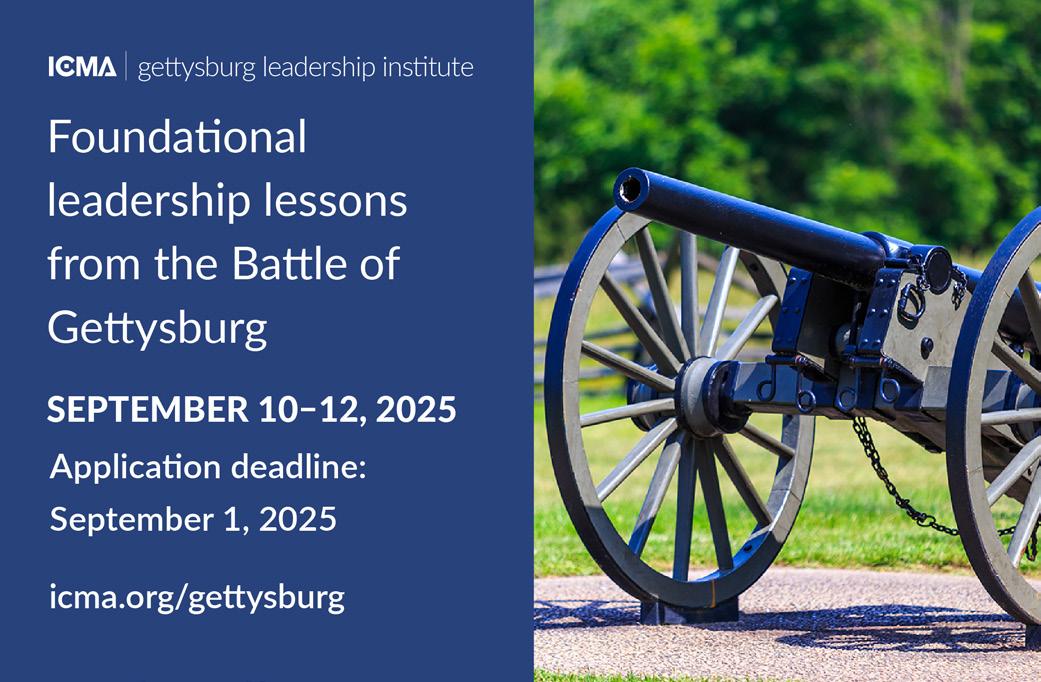

A Template for Effective Board Meeting Discussions
BY MIKE LETCHER, ICMA-CM
A structured framework to maximize board meeting productivity through three key dialogue points

LETCHER, ICMA-CM,
Across the country, local boards are shifting from collaboration to divisiveness, often driven by national and state party priorities. In this environment, maintaining effective governance requires a structured framework to keep discussions focused during meetings. Many boards rely on guidelines like Robert’s Rules of Order, parliamentary procedure, or consensus models. However, in my experience working with boards nationwide, these systems often lack the necessary structure to guide members through meaningful discussions on agenda issues, leading to inefficiency, frustration, and potential conflict. Engaging in meaningful board discussions on issues is essential for developing sound policies and providing clear directions to staff. However, striking a balance between constructive deliberation and over-discussion is crucial. When does board discussion add value and when does it hinder progress? The key is to have the board focus on three key dialogue points:
1. Support or Non-Support of the Issue—Encouraging members to explicitly state their support or non-support with reasoning.
2. Understanding the Issue—Emphasizing the importance of asking questions to fully understand the issue.
3. Clarifying the Issue—Aiming to clarify ambiguous information to ensure shared understanding among all members.
Figure 1 is an example of a board discussion template based on this approach.
Summary
For board discussions to be productive, they must strike a balance between exploration and resolution. This template provides a framework for board members to:
• Clearly express their stance on issues.
• Seek to understand the issues comprehensively through inquiry.
• Clarify ambiguities to enhance group understanding and foster informed decision-making.
Let’s look at how you introduce the template to your board. First, acknowledge the broader context in which some boards currently operate and how your board fits into the spectrum. Across the country, many boards— whether in government, education, or nonprofit sectors—are increasingly influenced by external pressures and political divisions. These dynamics can derail productive dialogue and shift the focus from governance to gridlock. Rather than react to these pressures with more control or less conversation, the goal should be to create a structured space where meaningful, focused discussion can thrive. This template offers a simple yet effective approach to guiding those conversations. Start by framing the template not as a replacement for existing procedures like Robert’s Rules of Order or consensus models, but as a complement that strengthens their impact. While those systems provide order and fairness, they often fall short in ensuring that discussions
1. Statement: Support or Non-Support of the Issue
Purpose Criteria
The statement from a board member should clearly articulate their position on the issue (support or non-support).
2. Understanding the Issue
A board member should aim to fully understand the issue through thoughtful and relevant questions.
Does the statement:
- Express agreement or disagreement with the issue being discussed?
- Provide a rationale or evidence to substantiate their position?
- Offer constructive feedback or alternatives if in non-support?
Does the board member:
- Pose questions to gain deeper insights into the issue’s background, context, and implications?
- Seek to understand the impact of the issue on stakeholders, resources, and the organization’s mission, strategic priorities, etc.?
- Demonstrate a willingness to listen and consider multiple perspectives?
Goal
To establish transparency and create a foundation for informed decision-making.
To ensure board members have a comprehensive understanding before forming opinions or making decisions.
3. Clarifying the Issue
Board members should aim to clarify specific aspects of the issue that may be ambiguous or misunderstood.
are strategic, thoughtful, and forward-moving. This tool provides clarity on how individual board members can participate in a way that adds value—by stating positions clearly, asking purposeful questions, and seeking clarification when necessary. The template is a way to bring intentionality and discipline to how issues are discussed, without limiting engagement.
When introducing the template during a board meeting or retreat, consider walking through each of the three sections—statement, understanding, and clarifying— using a recent or hypothetical agenda item as an example. This will help board members see how the structure works in real time and how it can prevent conversations from becoming circular or combative. Encourage members to reflect on how they currently participate in discussions and ask them to consider how using this framework might help elevate the quality and efficiency of their dialogue.
Does the board member:
- Identify and address areas where information is unclear or insufficient?
- Request detailed explanations or data to validate assumptions?
- Help streamline the discussion by eliminating confusion or conflicting information?
Striking a balance between constructive deliberation and overdiscussion is crucial.
To bring precision to the discussion and ensure that all members have a shared understanding of the issue.
Finally, emphasize that the goal of the template is not to restrict voices but to elevate and encourage them—ensuring that every perspective is heard in a way that contributes to better decisions and stronger outcomes. By focusing on components of the template, board members can engage in conversations that are not only civil and respectful, but also deeply effective. Learn more about making your board more effective. Plan to join me at the ICMA Annual Conference for our micro-certification session, Building High Performing Board-Manager Relations on Saturday, October 25 in Tampa, Florida. For the full conference schedule, visit conference.icma.org.
©bridgegroupllc
Figure 1:
Making Big Strides in ADVOCATING FOR COUNCIL-MANAGER GOVERNMENT
Lessons learned from the state of Illinois
BY PHILIP A. KIRALY, ICMA-CM (WITH CONTRIBUTIONS FROM JASON GRANT, PhD)
The council-manager form of government has a long and storied history in Illinois. The village of Glencoe adopted (by ordinance) the first council-manager government in the state in 1914, only the thirteenth community to do so in the nation at that time. After Glencoe, dozens of communities and counties across Illinois have embraced the form, either by ordinance or referendum.
In the past two years, Illinois has seen a uniquely large number of communities (nine since 2022) either questioning the efficacy of the council-manager form or seeking to embrace it. Because of this, both the Illinois City/County Management Association (ILCMA) and ICMA have joined together to advocate for the council-manager form.
Our combined efforts have been largely successful. The council-manager form was successfully defended in Bensenville, Evanston, Freeport, Maywood, and Orland Park. In Mattoon and Oregon, residents voted to adopt the council-manager form. While unsuccessful, efforts to adopt the council-manager form in Waukegan and Oglesby generated significant public engagement,

perhaps setting them up for future attempts. While each case across the state was different, the shared vision and willingness to accept the call to action to support the council-manager form showcased the importance of ILCMA’s and ICMA’s shared advocacy efforts.
Before joining ILCMA’s board and later becoming president, I had limited understanding of the depth and breadth of ICMA’s advocacy work. What I’ve since seen firsthand is the power of a strong partnership: ILCMA’s dedicated network of senior advisors (seven in all) combined with ICMA’s national platform to create a model for effective local advocacy.
The following are a few examples of how this partnership moved forward in Illinois.
A Tight Timeline to Preserve the Council-Manager Form in Bensenville
ICMA and ILCMA acted quickly in November 2024 after Bensenville fired its well-respected village manager and placed a referendum to change from the council-manager to mayorcouncil form of government on the April 1, 2025 ballot. With little time and only fledgling local support, ICMA staff and nearly all

ILCMA’s senior advisors (led by Brad Townsend) quickly reached out to find connections with residents. The Vote Yes Bensenville campaign took root online and in person, and senior advisors and ICMA staff participated in town hall meetings and other face-toface engagements. ILCMA Executive Director Dawn Peters and I drafted a letter that was shared widely with grassroots community organizers. For its part, once the grassroots Vote Yes Bensenville organization was formed, ICMA provided organizers with print materials, including graphic design and content development support, and sent staff to present information on the councilmanager form (including pertinent research backing up the presentations) and engage with community stakeholders. These efforts combined to result in over 66% of voters choosing to retain the council-manager form.
Council-Manager Form Gets Across the Finish Line in Mattoon
While there had been previous efforts to consider a change from the commission form to council-manager in downstate Mattoon, it wasn’t until 2024 that those efforts really started to build

momentum. Years of thoughtful strategic planning (and successful city administrators) gave the mayor and council reason to support the effort, and Citizens to Advance Mattoon Prosperity circulated petitions to place a referendum on the ballot in November 2024. Senior advisors Steve Carter and Scot Wrighton dialogued with city leaders throughout and participated in a public information
Evanston, Illinois, USA

session with ICMA staff in the lead-up to the election. ICMA’s resources were put to work, highlighting research and real-world examples of success in council-manager communities versus other forms. Ultimately, the referendum changing to council-manager was approved by over 55% of voters.
Challenging Established Council-Manager Forms in Freeport and Evanston
In Freeport and Evanston, calls to consider a change from councilmanager to mayor-council form ceased once the elected bodies called upon ICMA and ILCMA to help inform their communities of the distinctions between the two forms of government. In both cases, elected leaders agreed that the council-manager form was the best way to serve the people, and public support for mayor-council systems quickly waned.
Lessons Learned
If the paths to success in these examples seem similar, that’s not a coincidence. Each succeeded because of the pairing of ILCMA’s local resources with ICMA’s extensive advocacy toolkit.
ICMA offers a national lens, providing data, media outreach, and structured dialogue to empower informed decisions. ICMA’s Future of Professional Management Fund helps fuel these efforts, providing the resources needed to produce something as simple as photocopies of articles or as comprehensive as ICMA staff developing and presenting extensive presentations at in-person events. The ICMA team’s experience and depth of knowledge pairs exceptionally well with our local resources.
ILCMA contributes critical local context, things like real-world examples and success stories from within our state, while leveraging the expertise of senior advisors. Illinois’s seven senior advisors, each
a retired manager with careers spanning decades, have dedicated countless hours to council-manager advocacy over the past few years. Their voices were some of the most persuasive. This handson, collaborative support gives communities the tools to make thoughtful, informed choices about their future.
The many opportunities we had in Illinois to engage with communities about the council-manager form provided some important takeaways.
Change
The drive to question governance is often rooted in local leadership and public sentiment. The success or failure of any attempt to change a form of government frequently depends on the political will of current officials.
In Maywood, it was the mayor and council who led the charge to transition away from the council-manager form. However, their efforts fell short. Residents voiced concerns about the increasing risk of political corruption and weakening the delivery of essential services. Among other things, those fears led voters to retain the council-manager form. Conversely, in Oglesby and Waukegan, elected officials advocated moving to the council-manager form, yet the public hesitated. Skepticism about the return on investment of a manager’s salary and doubts about whether an appointed manager could truly understand the community stood in the way. It takes time and trust to build broad support for professional management in places where the benefits may not be clear.
Leadership
A recurring theme in many communities was the question of leadership and control. Should the mayor hold most of the authority, or is the community better served by a team of elected
Orland Park, Illinois, USA
officials who appoint an experienced manager to oversee daily operations? Bringing clear information, data, and real examples into the conversation can help ease fears and clarify what the councilmanager form really looks like in practice.
Trust
Helping voters grasp the difference between elected and appointed leadership is an important step. Sometimes, residents see the city manager as a mayor by another name, only worse, since they hold authority without being directly elected. That concern showed up in Evanston and Freeport, where some opponents suggested the manager had too much power with too little accountability. Obviously, that perception isn’t accurate.
Educating the public on the distinct roles and powers of a mayor versus a professional manager is critical. When residents understand these differences, they are more likely to support the form of government they believe will be most responsive. Ultimately, it comes down to trust in both elected representatives and the professionals they hire. This trust is not easily earned, but it is central to shaping public dialogue.
Data
Across communities, common concerns emerged: reducing corruption, increasing efficiency, controlling costs, and improving performance. Extensive research presented by ICMA staff demonstrated that council-manager governments outperform other systems in these areas. Even in places where voters opted to retain another form, the data wasn’t disputed; it simply wasn’t compelling enough to prompt change. The lesson? We need both facts and relatable stories. When data is paired with real-world examples and trusted local voices, it becomes much more powerful.
Standing Together
Advocating for the council-manager form of government is a team sport, and central to ILCMA’s and ICMA’s shared mission to uphold and support professional local government leadership. Because we worked together—sharing resources, building relationships, spending time—we had significant success in preserving the council-manager form where it was in jeopardy and creating opportunity where it was sought. In doing so, we fostered a more informed electorate, supported community-led advocacy, and
The Future of Professional Management Fund supports ICMA’s myriad advocacy efforts in support of the council-manager form of government. Member support and donations ensure resources are readily available when they are needed, as they were in Illinois. Learn more about supporting the fund at icma.org/icma-future-professionalmanagement-fund.

U.S. Communities Receiving Fund
Contributions from 2020 to 2025
Adopted Council-Manager Form Deer Park, Ohio
Eagle Lake, Texas
Hilliard, Ohio
Mattoon, Illinois
Redbank, New Jersey
Ithaca, New York
Blythewood, South Carolina
Retained Council-Manager Form Austin, Texas
Bensenville, Illinois
Evanston, Illinois
Freeport, Illinois
Maywood, Illinois
Orland Park, Illinois
Portland, Maine
Sacramento, California
Enhanced Management
Glencoe, Illinois
Portland, Oregon
ultimately strengthened local government’s ability to serve residents with integrity, expertise, and accountability.
Too few ICMA members are aware of the association’s advocacy efforts, often because many of them take place quietly and behind the scenes. But these efforts are critically important. As challenges to the council-manager form get louder and stronger, pairing our local resources with those of ICMA will be critical to ensuring the strength and standing of professional local government everywhere.
ICMA-CM, is village manager of Glencoe, Illinois, USA.

PHILIP A. KIRALY,
Behind the Scenes
Portland’s City Government Transformation
BY MICHAEL JORDAN
Voters in Portland, Oregon, overwhelmingly approved major changes to their city government, starting a two-year sprint to create geographic districts, launch ranked-choice voting, and build a centralized organizational structure.
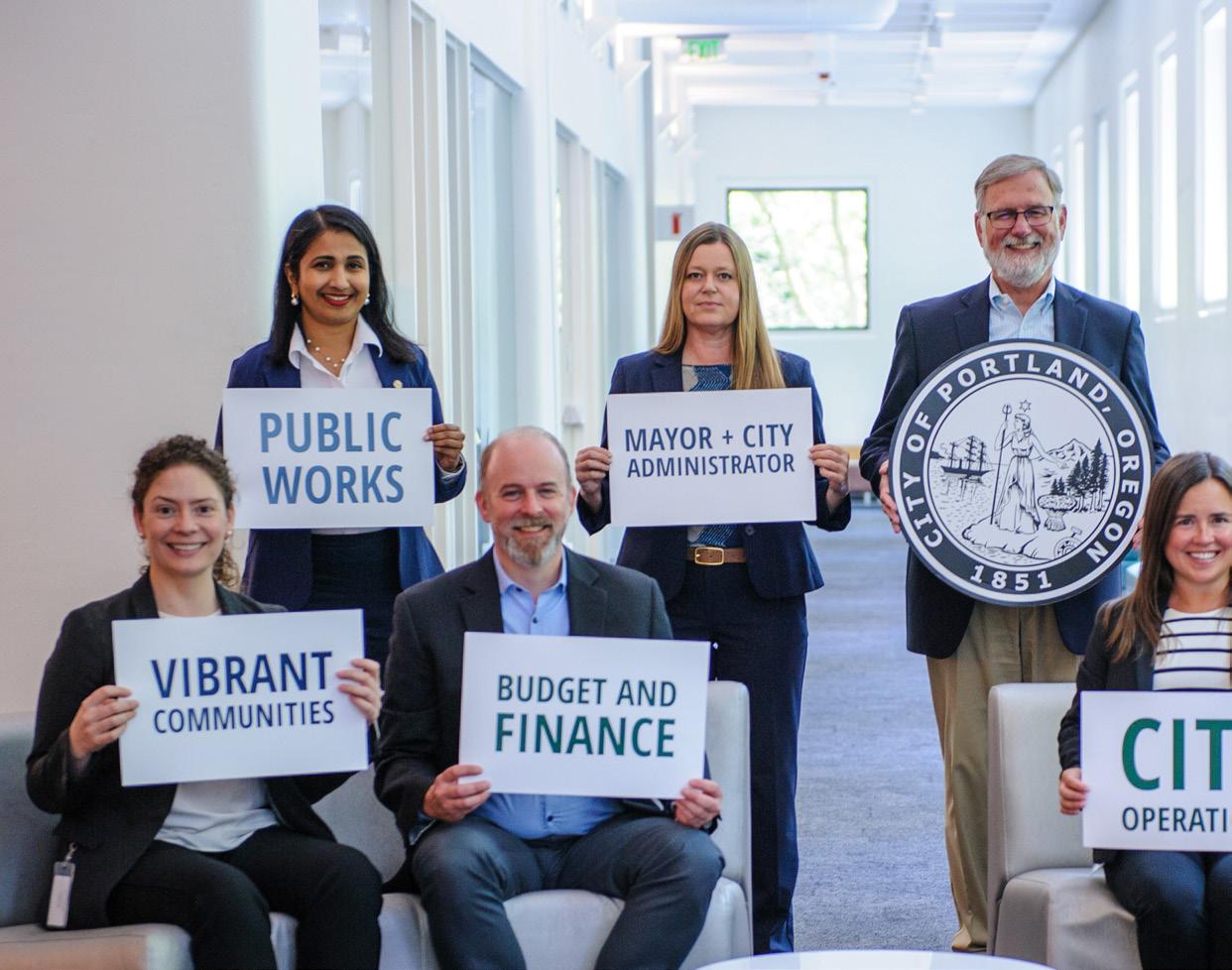
Less than 24 hours after Portlanders overhauled the way we elect leaders and run our city government, I stood behind a podium and officially launched the biggest transformation in our city’s history—speaking to TV cameras, reporters, my staff, and our community.
Proposed by the Portland Charter Commission, Measure 26-228 gave us two years to expand our city council with district representation, prepare for ranked-choice elections, and transition to a new form of government with a mayor and city administrator to oversee
operations.1 The clock started ticking at that press conference. Charter commission members handed me a baton to mark the end of their big job and the beginning of mine, as the administrator responsible for implementing voters’ direction.
“This baton and the transition it represents is both an honor and a lifetime’s worth of challenge for me and the staff here at the city of Portland,” I said into the microphone. “My team is prepared to take it on with intention and integrity, and maybe more important, with urgency.”
1. Communicate Early, Often, and Effectively
Transforming Portland’s government is all about building trust with our community and employees, which hinges on effective communication.
capacity for proactive outreach. This meant managing external messaging for all aspects of the project, pitching stories, coaching interview prospects, and working with broadcast reporters and national reporters to position top spokespeople.
Today, half a year into Portland’s new form of government, we have learned a lot. And we’re still learning. Although your challenges and changes probably look different from Portland’s, I am sure you too are navigating major shifts in our economy, workforce, and culture. Here are three things we’ve learned that might help you, too.
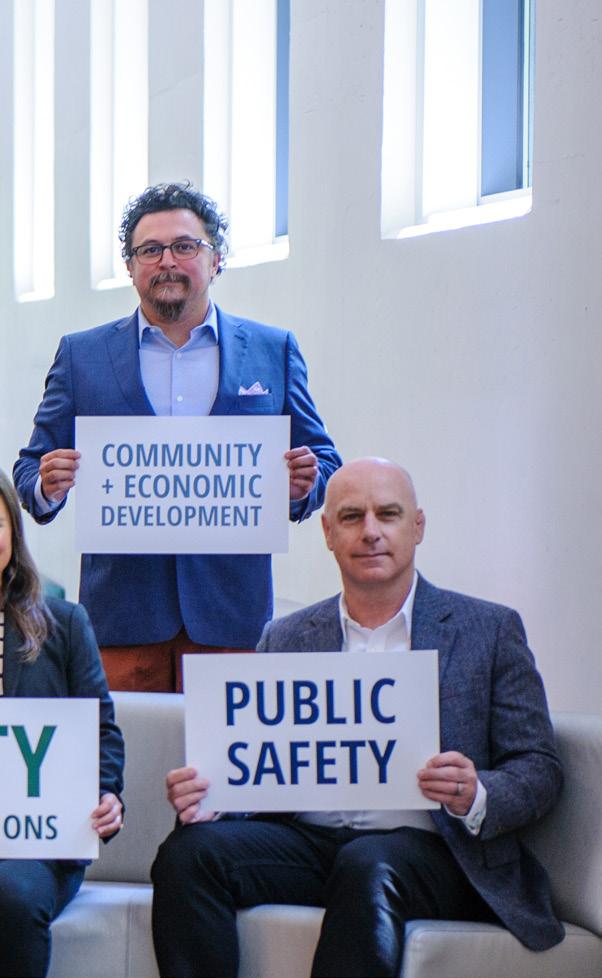
One of the biggest priorities was mobilizing a proactive strategy and team to shift doubt into optimism. We quickly established a communications group that would not only inform people about charter reform, but build communications approaches that serve Portland in our new form of government.
From the beginning, our team focused on consistent, easy-to-understand, and visual communications that would prepare employees, Portlanders, and candidates to trust in the November 2024 election. Our strategy centered on four key approaches:
• Build internal organization and alignment.
• Showcase and present our work simply, visually, and meaningfully.
• Build proactive, results-oriented communications.
• Establish a reputation and track record worth following.
An early win was our monthly e-newsletter. Short, conversational blurbs drove readers to longer stories on the project website, helping double readership over two years. We analyzed open rates, click rates, and website traffic, continually improving our reach and engagement.
We also pursued a streamlined and proactive media relations strategy. While inbound media inquiries were a constant, hiring a full-time media relations manager gave us
Other tactics included new external and internal e-newsletters, a web-based media relations monitoring tool, web and social content, paid media, imagery and animation—and even a comic book.2 We were committed to keeping Portlanders’ attention as they wondered, in the words of our comic book protagonist, “Are we finally getting that new government we voted for?”
2. Community Is the Main Character Portland’s city government revamp was shaped by and for our community, with the community-led charter commission engaging Portlanders from a variety of neighborhoods, lived experiences, and backgrounds.
To deliver on the changes that were ultimately approved by voters, we needed to continue inviting our community to the table. Every Portlander—whether they supported charter reform or not—had a vested interest in the success of this transition. Three advisory bodies ran deep, months-long community engagement activities to meet their assigned goals: The Independent District Commission needed to assess and recommend boundaries for geographic voting districts. The Salary Commission, consisting of human resources professionals, needed to research and recommend salary ranges for incoming elected officials. These commissions
will reconvene with new members on a set timeframe.
The broadest advisory body, the Government Transition Advisory Committee, led community outreach on all aspects of the transition over 18 months. This committee was tasked with engaging the public about the charter amendments and providing strategic, research-based advice to city leaders. Over the course of 75 public meetings and 140 presentations to community groups, their work helped answer questions and build positive conversations about the new form of government.
Building on community feedback that shaped charter reform, budget was dedicated to an innovative, community-led strategy to support nonpartisan voter education. Managed by a nonprofit partner, a grant program selected community organizations to educate hard-to-reach voters.

That investment made a tangible difference. In an exit poll of 1,600 Portland voters, 85% said they were aware of ranked-choice voting prior to the election and 91% reported understanding how to fill out their ballot. Polling indicates those who
had heard about rankedchoice voting were much more likely to understand their ballot—affirming the importance of active voter education campaigns.
According to similar surveys across the nation, Portland voters were well-
informed compared to other jurisdictions implementing ranked-choice voting. However, voters of color reported lower awareness (73%) and understanding (86%) than the population overall, reinforcing the need to continue our focus
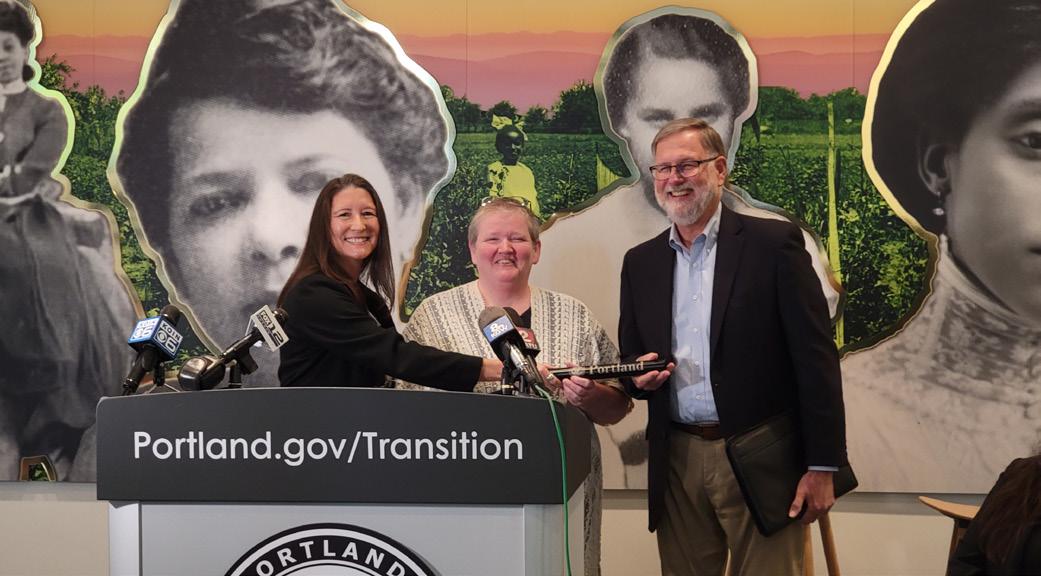
Voter education on ranked-choice voting at a bike happy hour.
Portland’s Government Changes
A captivating and less polarized election: Allowing voters to rank candidates in order of preference increases the number of women and people of color running for office, keeps selections competitive, and reduces polarizing campaigning, according to experts. While 118 candidates ran for office in Portland, the election delivered the most varied council ever, including three councilors who are renters, five councilors of color, six women, and eight Millennials. For the first time in Portland’s history, two Asian American councilors and one Generation Z councilor took office.
Non-partisan voting districts for direct and more diverse representation: An independent district commission established Portland’s four geographic voting districts to prepare for the first opportunity in over 100 years to elect three legislative council members per district, expanding the city council from four to 12 councilors.
Accountability and role clarity for the mayor and councilors: Prior to 2025, Portland was governed by a commission form of government where the mayor and commissioners were responsible for both advancing legislative policy and overseeing general operations. Now, the city council focuses on building relationships with constituents, approving a citywide budget, and setting policy. Overseeing day-today operations and proposing a budget is now the responsibility of a mayor elected citywide, with the support of a professional city administrator.
on comprehensive and equitable voter education.
3. Change Takes Time (and Flexibility)
In July 2024, we launched a new organizational structure and named a leadership team to centralize governance and test Portland’s new model in the months leading up to our first ranked-choice election. I was named interim city administer, and deputy city administrators were selected to oversee new “service areas”— groupings of bureaus with related missions.
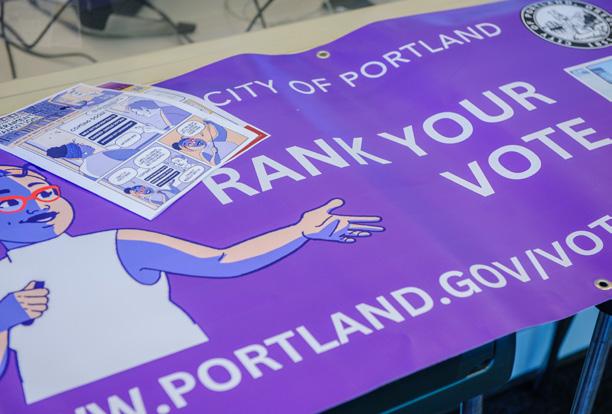
sessions to prepare for their new roles.
At their first formal meeting in January, city councilors began the process of establishing another Portland first: legislative committees. Over the past several months, those committees have developed policy and shaped budgets for topics such as transportation and infrastructure, public safety, and arts and economy. They have immersed themselves in the most pressing issues facing Portland, from curbing unsheltered homelessness to sparking our local economy.
down four decades of public service, Mayor Keith Wilson is getting ready to launch a national recruitment for Portland’s next city administrator.
My final assignment is simple: hand off the keys to a new city government that runs well, knows how to adapt, and builds toward a bright future.
Visit portland.gov/transition to learn more about Portland’s government transition. To follow Portland’s journey, visit portland. gov/hello and subscribe to our digital newsletter, the Rose City Connection.
Managing change required consistent and frequent communication to employees and Portlanders to help them understand how the new form of government would operate.
In November 2024, voters considered a record 118 candidates to elect a mayor, auditor, and expanded 12-member city council— three councilors representing each of four geographic districts. The most diverse group of elected leaders in Portland’s history celebrated this milestone at an historic swearing-in ceremony and attended multiple onboarding
Going in, we knew our civic transformation provided a starting point, not a panacea. We’ve experienced plenty of growing pains, from figuring out how the executive and legislative branches work together to set agendas, to developing and approving Portland’s first budget in this new form of government. We’re also fine-tuning our organizational structure, reducing the number of service areas, and centralizing core services such as communications, engagement, human resources, and technology.
Portland’s evolution will continue, even as I prepare to retire this winter. As I wind
Photos courtesy of City of Portland.
ENDNOTES AND RESOURCES
1 https://www.portland.gov/charter-reviewcommission/proposedballotmeasure 2 https://www.portland.gov/vote/ documents/guide-portlands-governmenttransition/download
MICHAEL JORDAN, Portland’s first city administrator, is preparing to retire after four decades in public service, including stints with city, county, regional, and state governments. From 2022 to 2024, he served as the executive who oversaw Portland’s voter-approved charter transition.

A Disruptive Elected Official
BY JAN PERKINS, ICMA-CM, AND KEITH METZLER
What can the chief executive do to bring the outlier into the fold and help the governing body function well?
The ideal governing body is one where all members follow agreed-upon norms, set goals and stick to them, respect the council-manager form of government, operate with high integrity and civility, and are mindful of staff capacity when new work is desired. It’s a council or elected commission that stays focused on having alignment to get important things done for the community.
Not every governing body matches this ideal. Sometimes a councilmember acts like they can go it alone or they try to take over the role of staff. Some elected officials can be rude and disrespectful, lashing out at staff or their colleagues. They can filibuster at council meetings. Or despite the council vote,
continue to work against the decision, or take their anger out on staff about the council action.
Community members expect their elected officials to work together to achieve important goals, to exercise fiduciary responsibilities, serve with ethics and integrity, to support a professional staff who can provide services, to operate transparently on behalf of all, and to work for the greater good. Prospective businesses want predictability and confidence that decisions made by the governing body will be well thought through and will be sustained.
The chief executive must consistently convey that everyone within the local government is there to serve
the community, and that the community is at the center of their purpose. A council’s dysfunction can permeate through the organization and community. If our leaders do not treat each other or staff with respect, members of the community may well mimic this behavior. The chief executive can make clear that they champion differences of opinions—that is the beauty of democracy. But when
discussing issues, it must be done respectfully.
One city manager said, “I remind the council that they all have one thing in common, and that is the love for the community we serve. We all love it differently. It seems to anchor a more civil and respectful dialogue on the dais and with staff.”
What are the consequences of a dysfunctional governing body?
Functional Governance
• Able to make unpopular, but necessary decisions.
• Disagrees respectfully.
• Explains decisions to constituents.
• Respects the council-manager form of government.
• Believes that another has the best interests of the city/ county at heart.
• Engages the public in productive ways.
• Votes from a principled position, rather than friendship or special interests.
• Respects colleagues’ right to vote the way they choose.
• Is trustworthy, doing what they say they will do and doing it transparently.
• Once the vote is held, accepts the outcome.
• Respectful of staff and supportive of staff in public.
• Avoids micromanaging the appointed boards and commissions and allows them to serve in their designated roles.
• Economic development can be stymied.
• Recruitment of new executive and managerial staff is impeded.
• The organization may have to pay more to get top staff.
• Turnover increases, especially among the staff who must interact with the council, which over time is expensive.
• Incivility among community members can increase.
Dysfunctional Governance
• Personal attacks on each other, staff, or the public.
• Panders to the loudest voices.
• Dominates discussions.
• Trespasses into administration and internal matters, trying to micromanage the role of staff.
• Uses social media to attack colleagues’ motives or integrity.
• Purposely being uncooperative.
• Attempts to embarrass staff or another councilmember.
• Despite majority vote, continues to speak against the people who voted for it, being personally critical.
• Votes for political gain rather than community good.
• Continuously raises issues that have already been decided.
• Insults and scores points at the expense of staff.
• Views colleagues as enemies or competitors.
• Tries to influence commissioners or rally activism at boards and commissions.
• Appointed board and commission members take their cues from the council and could begin acting in the same dysfunctional ways.
Figure 1 details some key differences between a functional governing body and a dysfunctional one. What can the chief executive do to help a governing body function well and to bring an outlier councilmember into the fold? This is not to say that the chief executive can solve the problem of the disruptive elected official, but there are steps that can be taken.
1. Engage your council in developing a set of agreedupon norms for governing. These are behaviors that all members agree are important for productive governance. Using a neutral facilitator can be helpful in creating these norms. Figure 2 shows a great example from the city of Grover Beach, California, which was adopted in March 2025.
2. Develop a policy and procedures manual for the governing body. Among other things, this would include norms, a code of ethics, specific protocols for meetings, and steps that can be taken when councilmembers do not follow the rules, depending on the level of severity of the infraction.
A policy and procedures manual should also be focused on the elements that help support the appearance of a more professional governance structure. The manual should serve as a resource that is not just focused on that rogue councilmember, but instead as a tool to help on-board new councilmembers, especially
Figure 1.
Norms for Governing,
City of Grover Beach, California
1. Maintain a citywide perspective while being mindful of our districts and communicate with our community.
2. Work together as a body, modeling teamwork and civility for our community.
3. Disagree agreeably and professionally.
4. Listen to one another. Communicate with each other. Seek to understand.
5. Assume good intent.
6. Demonstrate respect, consideration, and courtesy to others.
7. Share information and avoid surprises.
8. Keep confidential things confidential.
9. Respect the council-manager form of government and the roles of each party.
10. Communicate concerns about staff to the city manager; do not criticize staff in public.
those that do not have experience in a governance setting. Review and update it annually based upon the issues facing the respective organization. The manual is a document that the city/ county manager will find themselves referring to regularly so as to promote consistency among all members of the council. The manual adopted by the city of Victorville, California, is a good example.1
3. Orient new governing body members to the “how” of governance along with “what” the municipality does. These sessions are essential. Discuss roles of the elected officials as policy makers and the role of the chief executive in running the organization. Review roles, norms, and
strategic plan. Video trainings include, among other things, councilmember duties and responsibilities and effective city manager/council relationships. To be respectful of a new member’s time, these trainings can be scheduled over the course of a month or two.
the policy and procedures manual. Explain the “why” of those. Refer to best practices, such as attributes of effective governance teams from the Institute for Local Government.2
In Victorville, the city manager conducts onboarding sessions with all newly elected councilmembers. He includes a formal resource document, video trainings, introduction sessions with department heads, and facility/operation tours. The resource document introduces the new member to the city charter and municipal code. It includes an organizational overview, a description of the appointed bodies and their respective roles, an introduction to the budget and how it works, along with the council-adopted policies and procedures manual and
4. Reinforce roles. Focus the council on their policy and leadership roles and remind them that the city manager runs the organization. A city or county government is a municipal corporation, and the governing body is the board of directors of a multimillion dollar corporation. Their meetings are business meetings and the place to make business decisions. It is not their role to get into the day-to-day details of operations or to criticize staff. High-performing councils understand that they can do great work for their communities by being leaders representing their city/county at the regional, state, and national level.
5. Provide training to the mayor or board chair in running the meetings. This should also include guidance on how to handle a disruptive elected official as well as members of the public. Some agencies prepare a script or conduct mock council meetings for a new mayor. Your agency’s legal counsel can be helpful with this training.
6. Meet regularly with each member. For the outlier who might try to avoid these meetings, find ways to meet them on their turf. Find a place that works for him or her. Meet for breakfast or
lunch. Go to their business. Don’t avoid this person; listen and learn about their concerns. Assume good intent and that the member does wish the best for the community and even the organization. Look for common ground. There may be some underlying issues of concern to the outlier governing body member that do need to be addressed. If rude or disrespectful behavior is the problem, address it directly with the person. If the repeated issues have merit, deal with those in a productive way.
7. Have a strategic plan with clear goals and agreed-upon strategies. This provides the policy and budgetary context for what individual councilmembers may wish to achieve. Find out what each member’s priorities are and help them achieve some wins within this framework. It is important to understand all members’ interests, including the disrupter’s, and help them get those met in a productive way.
8. Provide guidance to your staff. This helps to ensure that individual department heads are not being “picked off” by the outlying councilmember. Establish clear protocols for how you want your council to communicate with you and your staff, including what is not acceptable. Make sure your staff understands your expectations.
9. Ensure that staff reports are top quality and professional. A resource for this is Mastering the Art: A Step-by-Step Guide to Writing a Quality Staff Report, by Tamara Letourneau, city manager of
Figure 2.
Laguna Niguel, California. The city of Victorville has prepared a resource document and video training presentation, Fundamentals on Writing a Staff Report, providing guidance on writing a staff report as if it were a disclosure document, providing sufficient background and detail for the elected body to make an informed decision.
10. Stand up for staff. Let the council know that “staff bashing” is not acceptable and that you will take steps to protect staff if needed. For instance, if a councilmember becomes disrespectful and rude to staff at a council meeting, call for a recess. Have the staff member leave the room; or when everyone returns from the recess, let the council know you’ve taken over the questions and answers, and they are to direct all questions to you. You can return with answers at the next meeting. Advise the council that you will take these steps if staff are not treated respectfully, and then do it.
11. Resist the rest of the council’s demands for you to “fix the problem.” Encourage governing body members to speak individually with the colleague with whom they are having problems. They should be encouraged to talk with their colleague about the impact of their actions, not the intent.
12. After a rough council meeting, follow up with each member of council to take a “pulse check.” This is important information for you. How are they feeling? Are there steps they could be taking? What could you be doing?
Assume good intent and that the member does wish the best for the community and even the organization. Look for common ground.
And as always, behave professionally and lead by example. This means treating all governing body members equally. It also means not allowing demeaning statements or disruptions to impede the work of the organization. Sometimes it means that you will need to stand up to someone who is behaving like a bully, and enlist the help of the rest of the board or council. Don’t avoid having candid conversations with your elected officials.
But What If Things Get Extreme?
Sometimes even the best procedures, trying to find common ground, and appealing to each elected official’s better side just doesn’t work. One or more may just be a disrupter. Yet the governing body must be able to govern and not allow one person to take over the process. When that happens, there are alternatives to be considered. These are not to be taken lightly but some circumstances can arise in which they become necessary.
Executive Session:
This would be called by the board chair or mayor with the purpose of the entire governing body discussing the concerns with the disruptive councilmember. This session should be a conversation with each member of the governing body speaking, and the disruptive councilmember should have an opportunity to respond. The goal of this session would be to reach agreement on behaviors.
Censure: A policy and procedure for censure would be in the governing body’s adopted rules and policy manual. The adopted policy should be specific as to the steps that would be taken, including the process by which allegations are stated, a majority of the governing body supports moving forward with either a hearing or investigation, and the censure process is conducted. A censure is no guarantee that the behavior will stop, but it is a clear statement by the governing body that the behavior is not condoned.
Limiting Access to City Hall: The adopted rules and policy manual can include prohibition of the governing body from being in city offices except during business hours and the official governing body meetings. This can be necessary when an elected official is combative with staff or the public in city hall and behaving in a disruptive manner. In Victorville, the city manager uses both the policies and procedures manual and its authority provided under the municipal code to restrict councilmember access to city hall to posted working hours and official governing body meetings.
To avoid the potential for the rogue councilmember alleging that they are being treated discriminatorily, it is helpful to have the same access restrictions in place for all councilmembers.
Conclusion
These situations are stressful. Our tips are not intended to suggest that the path will be easy, but ignoring the situation rarely makes thing better. Leadership is needed and you as the chief executive will need to be the one to do what you can within your role to help foster functional governance. It matters to your community and your governing board, and it matters to your staff. It is also important to take care of yourself during these difficult times. Talk to your mentor, friends, and/or colleagues in confidence. Know that you are not alone.
ENDNOTES AND RESOURCES
1 https://www.victorvilleca.gov/home/ showpublisheddocument/16250/ 638633947474570000
2 https://www.ca-ilg.org/resource/ attributes-effective-governance-teams
JAN PERKINS, ICMA-CM, is vice president of Raftelis, a local government management consultant and facilitator, former city manager, and a believer in good government and in the city management profession. (jperkins@raftelis.com)
KEITH METZLER is city manager of Victorville, California, USA. (kmetzler@ victorvilleca.gov)


What Aristotle Can Teach Us About Municipal Governments

Insights from ancient political philosophy for modern local governments
BY MICHAEL HULING
The council-manager (C-M) form of government has steadily become more common in municipal governments since the first local government manager was appointed in Staunton, Virginia, in 1908.1 The C-M structure, used in both city and county governments, emerged in response to the growing complexity of cities in the late nineteenth and early twentieth centuries as population growth, industrialization, and transportation, among other factors, made the governing of cities increasingly challenging. Additionally, concerns about corruption and “machine politics” made the notion of an impartial administrator responsible for the execution and implementation of policy more attractive.

The proliferation of this municipal structure speaks to its success, as cities are often reluctant to embrace such structural change until it has been proven to work elsewhere. The same can be said of policy issues, as demonstrated by municipal leaders who seek to replicate initiatives that have been effective in other jurisdictions, rather than trying to develop them first—and there’s nothing wrong with that. Imitation is the sincerest form of flattery, as the saying goes. While no form of government may be perfect, the benefits of the C-M system are noteworthy.
Advocates of C-M governments typically point to the expertise that city and county managers can offer, the accountability of managers to the governing body, and the nonpartisan nature of the manager position allowing for more objectivity and less partisanship. There is certainly plenty of evidence to support these arguments. A 2002 study published in the State and Local Government Review found that C-M governments are less susceptible to corruption than mayor-council governments.2 Likewise, a 2015 study published in the American Review of Public Administration concluded that C-M governments are more innovative, have higher population, greater economic growth, lower unemployment, and higher population density.3 These are great, evidencebased arguments for the C-M form of government, to be sure. However, I would like to suggest some additional ways of thinking about municipal government structure, which may provide a stronger philosophical foundation for C-M governments.
Although municipal governments may look different today than they did in Aristotle’s time, we can apply his insight to better understand their structure and operation, as well as the implications for council-manager governments.
The Matter and Form of Political Institutions
One of Aristotle’s most profound and influential ideas is hylomorphism, a term derived from the Greek words “hyle” and “morphe,” which translate to “matter” and “form.” Aristotle contends that all objects contain composite elements of matter and form from which they derive their basic characteristics. A house, for instance, is distinctly a house because of its matter (wood, brick, stone, etc.) and form (the design of the house making it suitable for habitation). An object that only shared one of these elements, such as a brick wall (same matter, different form) or an ornament of a house (same form, different matter), would not be a house because it does not have the composite elements of one. While Aristotle primarily applies his metaphysics of hylomorphism to physical objects, he also extends it to humans, with the physical body being the matter and the soul being the form. Naturally, the
concept is also applicable to the institutions created by humans, including our governments.
Much of Aristotle’s seminal work, Politics, is devoted to examining various typologies of government, which he describes as “regimes.” Aristotle evaluates the relative strengths and weaknesses of regimes ruled by the one (monarchy and tyranny), the few (aristocracy and oligarchy), and the many (polity and democracy). He applies hylomorphism to understanding how each regime is structured based on how it is organized (the form) and who is responsible for political decisionmaking (the matter). A monarchy is organized around the central authority of a singular figure, who is responsible for determining which policies ought to be implemented and how. A democracy, in most cases, is characterized by distinct branches of government with limited or defined powers, with representatives elected by the people to channel their interests and priorities into political action. Although municipal governments may look different today than they did in Aristotle’s time, we can apply his hylomorphism to better understand their structure and operation, as well as the implications for C-M governments.
The form of C-M governments features an elected legislative body, such as a city council or board of county supervisors, which has the power to approve or deny policy ordinances, development proposals, contracts with utility providers, grants for private or nonprofit organizations, and so forth. It also has an appointed executive, such as a city or county manager, who is responsible for enforcing or implementing the decisions made by the legislative body. In some cases, the executive may also provide insight or guidance to
inform the decisions made by the legislative body.
In mayor-council governments, by contrast, there is no separate executive leader responsible for the implementation of legislative decisions. Instead, an elected mayor holds executive powers and acts as the leader of the council, often being just as involved in legislative decision-making as the other members of the legislative body, if not more. This difference in municipal form may seem somewhat inconsequential, but the municipal matter is where the divergence becomes more pronounced.
Public policy is 1% inspiration and 99% implementation.
In both forms, there are also numerous departments and divisions that operate—directly or indirectly—either under the direction of the city or county manager, or under the council and mayor. The key distinction lies in who has the executive authority to implement the decisions of the council: the mayor or the manager. As an elected official, the mayor is subject to the same political pressures and incentives as the other councilmembers, for better or worse. Some believe that having direct accountability to voters is the best mechanism for preventing corruption and ensuring that policies reflect the interests of the community, and the absence of an executive manager ensures that legislative and executive actions are subject to the feedback loop of elections.
As we have seen, the evidence suggests that C-M governments are less prone to corruption than mayorcouncil governments. This may be, in part, because city managers are somewhat removed from the political partisanship that dominates elections, allowing them to focus on more objective questions of how best to implement the policies and initiatives that have already been decided. As the saying goes, “there is no Republican or Democratic way to fill a pothole.” Additionally, since city managers are not forced to constantly look ahead to the next election, they are able to develop a long-term vision for the community in ways that elected officials often can’t. Lastly, executive managers are accountable—to the councils that appoint them, to the municipal staff that work under their direction, and to the communities they serve each day. If accountability is only extended to government officials who happen to be elected, then our conception of accountability is far too narrow. Nevertheless, these are serious strengths of C-M governments which are a result of their unique composition—their matter and form.
Deliberation and Execution
Another area in which Aristotle’s ideas can provide valuable direction for municipal practices is rooted in his classic distinction between deliberation and execution. Aristotle contends that groups or committees are better suited for the task of deliberation due to their collective wisdom and knowledge, which will exceed that of an individual.
“For the many, of whom each individual is but an ordinary person, when they meet together may very likely be better than the few good, if regarded not individually but collectively, just as a feast to which many contribute is better than a dinner provided out of a single purse,” he argues in Politics. “For each individual among the many has a share of virtue and prudence, and when they meet together, they become in a manner one man, who has many feet, and hands, and senses; that is a figure of their mind and disposition.”4 It’s precisely this sentiment that is at the heart of Aristotle’s notion of the “wisdom of the crowd.”
For our purposes, public engagement and democratic deliberation, mediated through the elected officials on a council, is the mechanism of transmuting public preferences into public policy. This point also illuminates the importance of having elected officials who take the responsibility of public service seriously, exercising the virtues necessary to honorably represent their community. It’s no surprise that Aristotle emphasizes this in his discussion of “practical wisdom,” or “phronesis,” which is concerned with applying experience and virtue to particular circumstances. In Nicomachean Ethics, he describes the “mark of a man of practical wisdom to be able to deliberate well about what is good and expedient,” adding that it is a “reasoned and true state of capacity to act with regard to human goods.”5 Practical wisdom is essential for elected officials so that they may deliberate well with one another and community members alike, making decisions that are oriented
toward the common good of the community. Perhaps this is aspirational, but it does help elucidate the nature of deliberation within a political community, which requires the collaboration of residents and elected officials.
While Aristotle views groups as preferable to individuals for the purpose of deliberation, he suggests that the opposite may be true of execution. This distinction is effectively a division of labor, allowing groups (councils) to deliberate and individuals (managers) to execute. The capacity to exchange ideas and experiences, consider costs and benefits, and arrive at a collaborative decision informed by collective knowledge is the feature of deliberation, but this quality can become debilitating when misapplied to execution. When a council, committee, or assembly attempts to implement a given policy as a collective, the execution is often derailed by disagreement, indecisiveness, and conflicting strategies. The advantages of collective decision-making may become maladaptive in the implementation phase as members relitigate decisions already made and express incompatible views on how they should be executed. There are “too many cooks in the kitchen,” so to speak. In short, the concern is that the strength of numbers in deliberation will deteriorate into impotence and disorder during execution.
In response to these concerns, Aristotle advocates for “magistrates” that are responsible for implementing the decisions made by the deliberative council.6 He examines several ways in which the chief magistrates can be
chosen or appointed, and what powers and responsibilities they will have. Naturally, these details are dependent on the history and characteristics of the particular community and the government (regime) that it has produced.
For C-M governments, the city or county manager serves as the magistrate responsible for the proper execution of the policies and decisions approved by the council. The manager determines the best approach for implementing these decisions, often with input from elected officials, municipal staff, and the community. In the real world, of course, policies are not executed unilaterally by city managers as municipal governments are staffed with numerous departments that carry out daily operations. Nonetheless,
the implementation of policies deliberated by the community through their elected officials is still the principal duty of the city/county manager, who is ultimately responsible for the management of the municipality.
Why It Matters for Local Government
Although Aristotle was not contemplating the modern C-M form of government, his incisive arguments should inform how our municipal governments function. The matter and form of municipal governments fundamentally shape how they interact with the communities they serve. Their methods of deliberation and execution determine who will be heard and represented, as well as how policies are discussed, decided, and implemented. Unfortunately,
some municipalities have not thoroughly considered these questions and how they impact policy issues ranging from housing and economic development to transportation and public safety.
C-M governments have the structural advantages discussed, and the evidence supports their success relative to other forms of municipal government. And yet, they can still find themselves stifled by self-imposed obstacles that prevent the successful execution of policies desired by the community and approved by the council. As is often and correctly said, public policy is 1% inspiration and 99% implementation. Thus, a useful starting point may be to identify and address the barriers—internal and external; structural and procedural—that are limiting the potential of our cities.
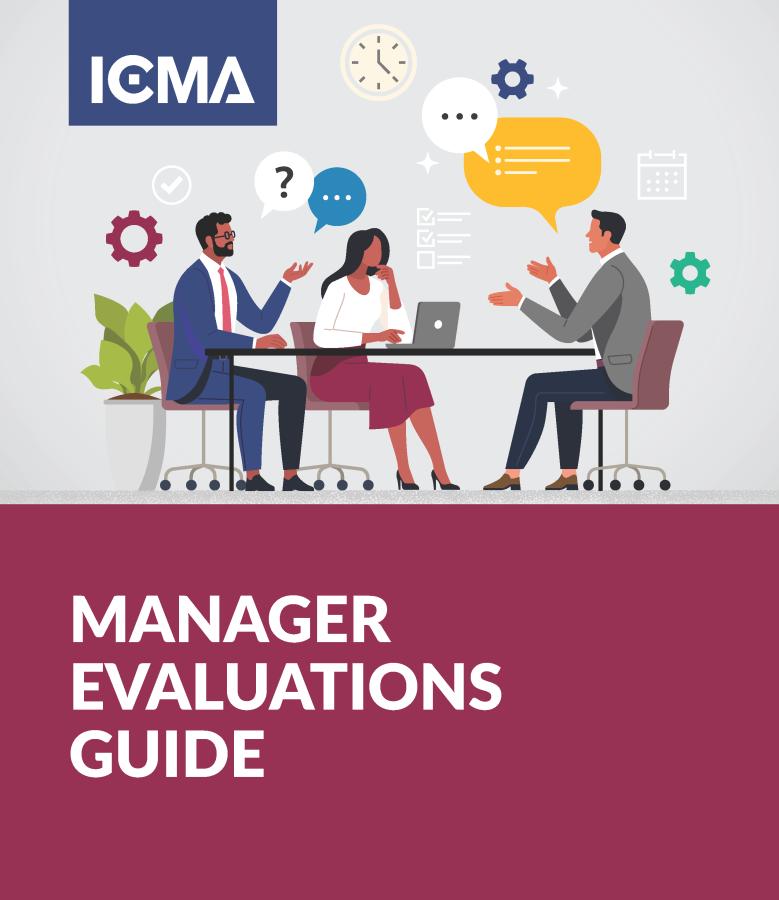
So, what can Aristotle teach us about municipal governments? An awful lot, as it turns out.
ENDNOTES AND RESOURCES
1 https://icma.org/page/icma-history
2 DeSantis, V. S., & Renner, T. (2002). City government structures: An attempt at clarification. State and Local Government Review, 34(2), 95–104. https://doi. org/10.1177/0160323X0203400202
3 “Form of Government Still Matters: Fostering Innovation in U.S. Municipal Governments.” American Review of Public Administration, 42 (3): 257-281. K.L. Nelson, K. L. and J. H. Svara, 2012.
4 Aristotle. (2001). The Basic Works of Aristotle (R. McKeon, Ed.). The Modern Library.
5 Aristotle.
6 Aristotle
MICHAEL HULING is a senior county planner in Clark County, Nevada, USA, and an advisory council member at the Davenport Institute for Public Engagement and Civic Leadership.


The Value of Work Plans Give yourself back some time!
BY JAN PERKINS, ICMA-CM, AND TAMARA LETOURNEAU, ICMA-CM
Scenario
Does this story sound familiar?
“At a recent city council meeting, the council directed the city manager to return in 60 days with a staff report on creating an arts commission. As assistant to the city manager, I knew it would become my project, added on top of other urgent council requests. In my typical fashion, I jumped right in the next day and started doing research and outlining the staff report. Two weeks in, I realize I missed three key things and now the deadline that seemed pretty reasonable at the outset seems a bit rushed. I now need to involve some other people and gather other
information I had not thought of on day one. The other staff hadn’t planned on spending their time on this project and now must drop what they are doing to help me meet the looming deadline. It is not considerate to impose on my colleagues to help me meet my deadline. And I don’t want to have to ask for more time from the city manager because I failed to plan properly.”
Question
What if this assistant to the city manager had taken an hour or two at the very beginning to think through the project and develop a detailed work plan? Maybe if she, together with her colleagues, had identified all the information needed, where she (or others) could get it from,
who needed to be involved, what approvals might be required, and what landmines she might encounter? Perhaps then she could have gotten to the finish line with some breath still left in her.
Solution
Taking time to plan is taking time to do it right and to do it efficiently. Time is scarce. We have fewer people doing more work. Expectations are high and we do not want to waste even a minute. So when we don’t take time at the beginning to plan out a project, we are actually wasting time and we put the likelihood of producing a quality work product in jeopardy.
What Is Involved in Developing a Work Plan for a Project?
Understanding that essentially every new assignment is a project. It may “sound simple” but if research is required, if a complex staff report is needed, if stakeholders are involved…it is a project.
Being clear about the objective(s) of the project. Write it out. Sometimes by doing this, we find that we aren’t actually all that clear as to what is being asked. This gives us an opportunity to seek clarification at the outset—before work on the project begins.
Understanding the challenges involved. By naming them, you can figure out ways to overcome them before getting too far down the project path.
Identifying the key steps necessary to complete the project and assigning a date to each one. While the steps may seem quite simple, putting dates to them may cause the team to see that some things need to be done before other things. Steps can involve gathering data, engaging outside stakeholders, getting approvals from executive management, writing reports and having them reviewed, going to appointed boards, and more. Time is an essential ingredient in each step.
Figure 1. Essential Information
Project Name:
Provide Options for Establishing an Art Commission
Project Objective: Present alternatives to the council, including cost, appointment process, staffing, and timeline
Final Due Date: 60 days (June 15 for publication of council agenda)
Deliverables:
• Staff report to council
• PowerPoint presentation to council
Project Lead: Assistant to the city manager
Other Team Members: Community services director, deputy city attorney, city clerk
Outreach Needed: Community members asking for this, members of local art community
Data Needed:
• Examples from other cities with art commissions
• Staffing anticipated for the art commission
• Costs (staffing and non-staff costs)
Designating a lead person and helpful team members. Every project needs one person as the coordinator or lead. Otherwise, there is confusion. But most projects need at least one other person to assist, whether that is in a document review capacity or helping with other tasks.
Staying on task. This means regular check-ins on the work plan to
see what has been done, what needs to be done, and what impediments have emerged that need to be dealt with. In some cases, that could mean planning short check-ins with all members of the project team to make sure the project stays on track.
Feeling more confident! By taking time to plan, each individual involved understands their roles, expectations are clear, and the project is one that everyone can be proud of without being overwhelmed.
How Do I Create a Work Plan?
Having a template with the key questions to answer can help. First, assemble the details for your workplan, as shown in Figure 1. Then build out your work plan template by task, as shown in Figure 2.
Conclusion
Local government work is dynamic. We are constantly juggling priorities. In some cases, we have to become subject matter experts in a very short time frame. When we fail to take a moment to plan out a project, we can create unintended emergencies for our colleagues, as well as put ourselves in a bind and risk not producing quality results in a timely manner.
A work plan doesn’t guarantee that problems will not occur, but it is a good way of anticipating challenges, being clear on expectations, enlisting colleagues to assist in a way that respects their time, and increasing the likelihood tenfold that the results will be something we are proud of.
Figure 2. Work Plan Template
Major Activities and Tasks Who When Notes
A. Start Project
1. Prepare work plan and convene project team.
2. Establish assignments and timelines.
B. Gather Data
1. Obtain information from other cities with art commissions.
2. Interview stakeholders to understand expectations for the art commission.
3. Identify staffing and other costs likely to be needed.
Assistant to the city manager
Week 1
4. Summarize all data gathered.
5. Meet to review all data gathered, identify key themes, answer remaining questions, and determine staff recommendation.
Prepare Report and Slide Deck
Assistant to the city manager for city research
Community services director for stakeholder interviews
Assistant to the city manager (with input from community services department and finance department)
Assistant to the city manager
Assistant to the city manager to convene meeting
Assistant to the city manager
Weeks 2–4
• May consult with a colleague on this to check steps and timelines in this draft.
• Following this meeting, send a summary of agreements and timelines to the team.
• Use websites and call city staff to learn the scope of work of the commissions, frequency of meetings, size of commissions, appointment process, responsible department, and other information, as well as lessons learned in those other cities.
• Meet with the key stakeholders with interests in establishing the art commission, ensuring that a variety of perspectives are obtained; summarize results of these meetings (to place in the report).
• Identify what staffing will depend on (e.g., frequency of meetings; scope of the arts commission’s mission; level of position that will be required to handle open meeting laws, agendas, and other administrative tasks).
• Summarize what was learned in a way that is clear; identify questions that need to be answered that arose during the data gathering phase.
• Create an agenda for this meeting; end with clear decisions and/or follow-up assignments.
Weeks 5–7
• Outline the key sections of the report.
• Prepare draft.
• Review with team.
• Prepare final report and obtain approvals.
• Prepare slide deck and obtain approvals.
D. Present Report
1. Dry run with team.
2. Present to council.
Assistant to the city manager
Week 8
• Schedule the dry run with the team (community services director, deputy city attorney).
• Work out the bugs and anticipate questions the council is likely to have.
• Tip: Do not do your “dry run” in front of the council!
As a bonus tip, it is always a good idea to have a colleague with excellent writing skills “peer review” your report and slide deck for your presentation to the governing body. It is true that we cannot
proof our own work. If the goal is a high-quality product, then the peer review approach can help get you to that finish line!
Good luck with your work planning.
JAN PERKINS, ICMA-CM, is a former city manager of two California cities and currently vice president of Raftelis.

TAMARA LETOURNEAU, ICMA-CM, is city manager of Laguna Niguel, California, USA.

C.

THRIVE IN LOCAL GOVERNMENT 2025 COACHING PROGRAM

WEDNESDAY, SEPTEMBER 17
New Job Overnight: How to Make the Successful Transition
WEDNESDAY, OCTOBER 15
Mastering Your Growth: Proactive Career Development Strategies
WEDNESDAY, NOVEMBER 19
Trends Transforming the Workforce: What You Can’t Afford to Overlook
All Webinars start at 1:30pm Eastern time. Miss a webinar? Watch it anytime! Register and watch digital recordings from your ICMA Learning Lab Dashboard.
Don’t miss out on these FREE 2025 coaching webinars.
REGISTER TODAY!
Additional free coaching resources at ICMA Coaching:
• Access digital recordings on ICMA’s Learning Lab
• Career Compass monthly advice column
• CoachConnect for one-to-one coach matching
• Live speed coaching events, talent development resources, and more. Join our list for coaching program updates and more. Email coaching@icma.org.

WHY DON’T THEY TRUST US?
With
the erosion of trust in local government over recent years—and the nasty side effects
that brings with it—it’s incumbent upon us to be intentional with our efforts in reversing the trend.
BY RICK DAVIS, ICMA-CM
Ihave come to conclude that there is scarcely a more important and relevant discussion topic for city/county management, especially now, than this thing we call “trust.” In fact, I think it was an important thing to talk about in 1996 when I first darkened the doors of city hall. However, particularly since the turn of the last century, I have witnessed an accelerated erosion of public trust in all governmental institutions, including local government. This growing trust deficit has come with some pretty
nasty side effects. Not that these haven’t always been among us, but they now appear more pronounced than ever before. I don’t think many in our profession would disagree that, generally across the United States, civic engagement is low and agitation is high. It is easier today to fill the council chambers with the angry and the outraged than it has ever been. Growing hostility and polarization have meanwhile created a difficult environment for our employees, the vast majority of whom simply
want to make life better for our residents. This situation isn’t getting any better, nor is it going to get better, primarily because we are not actively and sufficiently engaged in building or repairing trust. Successfully nurturing trust with our residents requires continuous attention and effort. Trust is not static. We are either elevating trust or it is declining. However, before we embark upon an examination of why trust is so very important and what can be done to rekindle it, we need to share or at least
accept, for the purposes of our discussion, a common understanding of what trust is. It is common to confuse trust with confidence, for instance. One may say, “I trust the city to pick up my garbage on Tuesday,” “I trust my coworkers to do their job,” “I trust my bank to safeguard my money,” etc. But what they’re really saying is that they have confidence in certain outcomes materializing. For example, every time I board an airplane, I don’t give a second thought as to whether the pilot is qualified
and able to safely fly me to my destination. Because I’ve seen the outcome of my arriving unharmed many times, I am confident that it will be so again. I don’t “trust” the pilot. I don’t even know who the pilot is or anything about him or her. I have confidence, nevertheless, based on my experience; and I book my ticket with the confidence that the airline will only place a qualified person into the captain’s chair. When they stop doing that, I will reevaluate my confidence…if I’m still around.
In contrast to simple confidence, when I trust someone, I am “entrusting” him or her with something very valuable or precious. I am making them a trustee, and I am giving them stewardship for something that’s important to me. To be “trusted” literally means to be made a custodian for something of high importance.
Over the years, I have served officially as a “trustee” for a regional dispatch center and two hospitals. In all three cases, there was someone who was depending on me
to take care of that center and those hospitals. As a trustee, I felt the weight of those responsibilities and was acutely aware of the lives I would unintentionally harm if I failed to ensure those entities operated in the best interests of those being served. Likewise, when we trust someone, we are giving them custodianship of something very important to us, and those whom we truly trust should feel the weight of that responsibility.
This is why when trust is betrayed it is usually much

Trust is more than an emotion. It’s the basis for all human relationships. That’s why the absence of trust in your community can have such a dramatic effect on just about everything.
more devasting than when someone simply lets us down, and this sense of betrayal can emerge from our experiences with any person or even institution that we had once decided to trust. When we have entrusted someone with something that is very important to us and they betray that responsibility or stewardship, we feel the pain on a very spiritual level. Because we have been injured, we may find it very difficult to be vulnerable enough to trust that person or institution in the future…or any other similar person or institution. Indeed, many of us are heirs to the betrayals perpetrated by those who came before us. I still recall a phone call from a woman who screamed at me for a half hour about how our city had betrayed her in 1963! She vowed that she would never trust the city again and then hung up. On a city level, betrayals happen when a resident determines that we in city hall neither care about nor care for them and their community. And trust once lost is indeed difficult to recapture.
When I was young, my coaches used to tell me to “play through the pain.” It was a different era, I get it. Unfortunately, many in our profession fail to grasp the importance of elevating or recapturing trust. They have concluded that residents will never be happy and that they are inherently suspicious, cynical, and critical. I can just hear some of them saying, “It’s better to just put your big boy or girl pants on and play through the pain. It’s just the way the profession is. People aren’t going to trust
us, and so what! I don’t need them to trust me. I just need them to pay their taxes and live somewhat functional lives.” This is certainly one approach, but consider what Dr. Henry Cloud, a New York Times bestselling author, psychologist, researcher, and leadership expert, has discovered regarding the impacts of trust upon our institutions, communities, and nation. Among many positive effects of high trust, Dr. Cloud’s research shows that:
• Rises in trust affect gross domestic product growth in economies through increases of business investment, human capital accumulation, and organizational improvements.
• Work teams with high trust outperform teams with low trust in results across multiple measures.
• High trust leaders are more effective across multiple measures.
• Performance, turnover, and customer experience are affected by trust, and the absence of trust leads to multiple business problems.
• What is referred to as “social trust” (positive attitudes toward other members of society) increases individual success; maintains health; reduces anxiety; increases welfare, health, and education; and improves physical and mental health in a society, while low trust does the opposite. (Cloud, 2023)
Trust is more than an emotion. It is the basis for all human relationships. That’s why the absence of trust in your community can have
A friend of mine, a fighter pilot, told me that they were forbidden to fly closer than 500 feet above a tree canopy. He set his personal standard at 1,000 feet just to ensure he was always flying well above the tree line. My advice to you is likewise to always fly well above the tree line.
such a dramatic effect on just about everything. Like Dr. Cloud, allow me to accentuate the positive and provide a few of the positive effects of high trust inside and outside of city hall.
• There exists a higher level and frequency of resident engagement in civic life. High community trust environments tend to encourage more direct engagement with local government through service and volunteerism, voting, and event attendance.
Conversely, when people feel betrayed, the first instinct is to withdraw.
• Civility is generally the rule, not the exception. Dialogue between residents and those who serve them is respectful and focused on developing win-win solutions to problems.
• There is greater political calm and continuity in local government leadership.
• Outside investment (economic development)
in the community is facilitated. Development dollars are usually attracted to politically placid, stable environments.
• It becomes easier to recruit and retain high-quality employees, and they are much more productive than their counterparts in low-trust environments.
So you may ask, “What did I ever do to lose their trust?” Perhaps nothing. That’s the point! When it comes to trust, what you aren’t doing is just as important, perhaps more so, than what you are doing.
Remember my exchange with the irate woman? I was born in 1963! I didn’t do a thing to inspire her lack of trust in our city. There are simply things well outside of our control that created our low-trust environment and factors that keep it low. However, we don’t need to address the past. We need to talk about the future. What are we going to do about
recapturing and elevating the trust of our residents?
Dr. Cloud, in his book, Trust, presents what he refers to as the five essentials of trust: understanding, motive, ability, character, and track record. Each of these needs to be or should be present if we are to rationally expect someone to trust us. As it relates to our topic at hand, local government, I propose to you a slightly different set of essentials. I call these the five pillars of community trust:
• Listening.
• Authenticity.
• Delivering.
• Integrity.
• Sustained Effort.
Listening—My experience is that we “municipal types” spend far too much time and energy in the exercise of convincing residents that we are worthy of their trust instead of more appropriately demonstrating our trustworthiness by first and
foremost listening to them, and I mean deep listening. As human beings, we do not and will not trust someone we do not believe hears us and understands us. Deep listening entails listening to understand, not simply giving the other person a chance to talk. Public hearings and surveys do little by themselves to communicate that we are truly listening to understand. As we engage in deep listening, demonstrating our earnestness to understand, we send the first trust signal to our residents that says, “This might be someone I can trust.”
Authenticity—
Authenticity is that characteristic or element that brings a genuineness to our listening. This entails demonstrating that we not only heard and understood, but that what we heard and understood is important to us, that we have our residents’ best interests at heart and in mind. Our ability to demonstrate authenticity sends the second trust signal that says, “I was not only heard and understood, but I think they actually want to do something about it.” The trust needle begins to rise, and this show of empathy and genuine concern inspires hope. Delivering—Of course, listening and authenticity fall flat and may ironically cause further erosion of trust if we fail to follow through with what we know and understand by exercising our professional will and demonstrating an ability to deliver on what we now understand the need is. We sometimes refer to this as competency. Competency doesn’t have anything to do
with diplomas, credentials, or even talent. None of that matters if we fail to deliver. Competency is marked by action, not by qualifications. When authenticity collides with true competency, trust almost always escalates. You’ve now sent the third trust signal.

needed.” How easy is it to trust a person or institution that consistently listens, understands, and delivers! Integrity—Nothing will blow a hole into the hull of trust like dishonesty or unethical behavior. One ethical lapse and trust may never be recovered. I’m not saying that a comeback cannot be made, but it will certainly become a mountain to scale. Even the perception or appearance of impropriety can kill trust. A friend of mine was a fighter pilot. He told me that they were forbidden to fly closer than 500 feet above a tree canopy. He set his personal standard at 1,000 feet just to ensure he was always flying well above the tree line. My advice to you is likewise to always fly well above the tree line. A lot of otherwise very honest people have lost professional and
political careers over matters and situations that had initially appeared harmless or innocuous. A good rule of thumb is that if you have even the smallest question about the ethical nature of something, stay away from it. Fly well above the tree line. Finally, few things are more harmful to long-term trust than shortterm effort. As you begin to address resident trust, make sure that this signals a new way of doing business. It is essential that trust building becomes a part of your cultural and organizational DNA. Your efforts cannot be a flash in the pan. If they are, the next time someone at city hall has an epiphany and decides to embark upon an effort to build trust with your residents, it will be much more difficult to accomplish. It’s almost like you can hear the critics say, “Oh, here we go again! We tried that before. It didn’t work then, and it’s not going to work this time.” They can throw these peanuts from the gallery because it’s partially true. A more correct version of this critique would be: “We tried this before; and because we stopped, it’s going to be tougher to pull off this time.” Once you sense the inertia and have a bit of wind at your back, keep going!
As a closing word regarding sustained effort, don’t become disheartened if, despite doing all the right things, your residents don’t rush into your arms. Some of them are skeptical and have felt betrayed by government for years. Others aren’t going to know what to think. They’ll have to see things play out for a while before reengaging.
Yet some will never trust local government, come what may. Whatever effort you pursue to regain or elevate resident trust, I can promise that you will receive reactions that fall along a well-formed bell curve. The key is to be patient and press forward knowing that you are doing the right things, and the benefits of doing so are well worth the effort.
Trust, simply put, is the basis for all productive relationships, and this includes your relationships with the people you serve. Without it, even the wealthiest communities are left impotent. With it, even cities and counties of little means can pull off great things. This is because when you enjoy the trust of your residents, you are empowered to avoid the headwinds to progress with which so many of our colleagues grapple.
Disengagement and apathy, polarization, agitation, cynicism, extremism, dysfunctionality, outrage, and outright hostility are not just signs of the times and the fate of your community. They are symptoms of trust anemia, and you can begin today to treat this condition by authentically providing your residents every reason to trust their local government again.

RICK DAVIS, ICMA-CM, is assistant city manager of League City, Texas, USA. He is the author of Elevating Trust in Local Government: The Power of CommunityBased Strategic Planning. (rick.davis@leaguecitytx.gov)

Cognitive Biases, Heuristics, and Fallacies in Municipal Decision-Making
BY JON QUINDAY, ICMA-CM
Part two of our series on practical decision-making strategies for city/county managers
City and county managers face unique challenges as they navigate the complexities of governance and decision-making. Cognitive biases and heuristics—mental shortcuts that simplify complex decisions—can often distort judgment, leading to flawed reasoning and unintended consequences. This article delves into specific biases like confirmation bias, anchoring, and the framing effect. Using real-world examples, we will examine their impact on municipal decision-making and provide insights into how city/county managers can recognize and address these cognitive tendencies.
Many people, including newly elected officials, believe that all cities operate similarly,

regardless of size, with the same challenges and resources. For example, Russell, Kansas, has a population of 4,403, which may lead one to believe they have the same personnel and responsibilities as other Kansas communities of the same size. Doing so is an example of a representative heuristic—assuming the two municipalities with the same population have the same services, demands, and resources, and overlooking other relevant factors such as geographic location, economy, and policies. In comparison, Goodland, Kansas, has a population of 4,390, or 13 less than Russell’s. However, they have 56 full-time employees while Russell has 98 full-time employees.1 Goodland’s annual operating budget for fiscal year 2024 was $16,703,144 while Russell’s is $29,335,490.2
There are many reasons for the sharp differences; however, this illustration supports the influence of representative heuristics.
While cognitive biases and fallacies impact city/county
managers, governing bodies, and communities regardless of size, this article and the third article in the series will provide examples to illustrate the influence of cognitive bias, logical fallacies, and heuristics from my more than 30 years of public service, including the last 12 as a city manager.
Managing a municipal organization, particularly one providing essential services such as utilities, is a dynamic task with high stakes. Managers oversee operations that impact the lives of every resident, business, and visitor, 24/7, with even minor operational flaws having significant consequences. The interdependent nature of municipal systems means that decisions in one area often have far-reaching effects across the organization, necessitating constant adaptation to meet evolving demands and regulatory requirements. City/ county managers contend with the practicalities and complexities of governance. They must rely on effective communication—conveying information and active listening—engaging with information and ensuring understanding without passing premature judgment.
Simultaneously, they must be aware of cognitive biases and logical fallacies that can distort decision-making—their own, the governing body, and residents— thereby undermining public trust. Cognitive biases, such as confirmation bias, where managers, governing body members, and residents seek information that aligns with their beliefs, and the availability heuristic, which biases judgment based on recent or emotionally charged examples,
can negatively influence decisions. Logical fallacies, such as ad hominem attacks and straw man arguments, further complicate communication and decision-making, making it harder to reach constructive solutions and building barriers to effective boundary-spanning.
The impact of these biases is not limited to the effectiveness of city/county managers; they also shape how the public perceives and responds to the services provided. In a polarized political climate, where divisions often seep into local governance, biases can lead to decisions that appear unfair or untransparent, contributing to public dissatisfaction. Moreover, cognitive biases such as loss aversion and sunk cost fallacies can lead managers to prioritize avoiding perceived losses over making the best future-oriented choices, while framing effects and anchoring biases can skew how issues are understood and acted upon.
As the environment surrounding municipal governance grows more complex, many city/county managers leave the field, raising critical questions about the profession’s future.3 In the current environment, where divisiveness and an “us versus them” mentality dominate political discourse, managers must focus on the common good. Their role in providing essential services that affect every aspect of community life makes their leadership indispensable. Effective communication, awareness of cognitive biases, fallacies, and heuristics, and an unwavering commitment to impartial decision-making are vital to navigating the challenges of municipal management. Managers must rise above the
Cognitive biases and heuristics—mental shortcuts that simplify complex decisions—can often distort judgment, leading to flawed reasoning and unintended consequences.
polarization that pervades all levels of government, ensuring that their communities receive the high-quality services they rely on and deserve.
To mitigate these negative influences, city/county managers must be vigilant about their biases and decision-making processes. They can safeguard against these pitfalls by fostering a culture of transparency, soliciting diverse viewpoints, and relying on objective data to guide decisions. By actively reducing the impact of biases, fallacies, and overreliance on inferential heuristics, managers can improve the quality of governance, enhance public trust, and ensure that the services provided effectively meet community needs and values.
According to the U.S. Bureau of Labor Statistics, “Mayors, city managers, county administrators, and governors are chief executives of governments” who oversee budgets, programs, and the use of resources and represented 9% of the 313,2900 chief executives in the United States in 2023.4 Like other top executives, city/county managers work full-time, and many work more than 40 hours per week, including evenings and weekends, as there is no typical day. Technological advances have increased productivity and ensured that managers are digitally tethered to their work and responsibilities. The time pressures associated with city/county management
can lead to bad reasoning from cognitive biases, fallacies, and overreliance on inferential heuristics.
Managers rely on information from sources that frequently change based on the subject, such as residents, governing body members, staff, websites, television, regulatory agencies, and experts. Communication consists of more than just the source and receiver. Communication is a process that involves the source, receiver, message, channel, feedback, noise, goals, and context. The dynamic nature of the profession’s environment and time constraints can lead to poor evaluation of information by not paying attention to or understanding each component. For example, as a city manager, I have found myself listening to sources of information passively, such as newscasts or legislative hearings, listening to respond, not understanding, or thinking of something else. In each of these examples, I failed to correctly translate the message/information into some meaning and observe nonverbal clues, which can lead me to understand the message or its context and fall into a cognitive bias trap.
When our attention is on point for the matter, the manager must evaluate the evidence, assumptions, or reasons before drawing an inference, that is, making a judgment or decision. An inference is a process we use to conclude assumptions or
premises. At the same time, an argument is not a process but one or more premises and a conclusion—we draw our inference from the premises and conclusion of an argument.6 Arguments are often used for problem-solving, such as operational issues, persuasion, policy recommendations, and evaluation.
When reasoning, managers are vulnerable to biases. However, if they understand how biases work and the influence they may have, they can work to minimize their impact on critical thinking. For example, when evaluating arguments, managers must ask themselves three questions: “Are the premises plausible, has relevant information been omitted, and how strongly, if at all, do the premises support the conclusion?”7
The city/county manager is vulnerable to flawed, fallacious reasoning from cognitive biases without answering these three questions.
The Hidden Influence of Cognitive Biases
Confirmation
Bias:
Favoring Familiar Beliefs Over Objective Analysis
Confirmation bias occurs when we search for, interpret, or remember information that supports our existing beliefs while ignoring or downplaying information that contradicts our beliefs.8 A city/county manager who does not correctly evaluate an argument may favor information that confirms existing beliefs, leading to only
accepting arguments that fit preconceptions while ignoring contradictory evidence.
Smaller communities often face limited financial resources, lacking the substantial tax base, sales tax revenue, or user fees that larger communities have. This creates intense competition for funding across various departments and projects. For instance, imagine the governing body of a small community debating how to allocate its limited resources: Should they replace outdated park equipment or invest in a new road to facilitate potential future housing developments? The governing body turns to John, the city manager in our example, for a recommendation.
John has long believed that parks are essential to a community’s quality of life, and he typically supports investments that directly benefit children, such as park improvements. A housing developer presents data showing that a new road would lessen developers’ costs, stimulating muchneeded housing development in the city. He has seen this occur in other small Kansas communities. Meanwhile, the public works director provides information suggesting the new road could bypass an aging, no-longer-functional road. This approach would allow the city to find funding to either remove and close the non-functional road or find grants to pay to fully rehabilitate the non-functional road, which is estimated to be a
multi-million-dollar endeavor. However, instead of objectively evaluating both proposals, John focuses on finding information that aligns with his pre-existing belief in the importance of parks. He overlooks or downplays the data from the housing developer and public works director. This behavior reflects confirmation bias, where John selectively gathers and interprets information that supports his views. As a result, John’s recommendation may not fully consider the city’s long-term needs and may not be the most beneficial choice.
Anchoring and Adjustment: The Weight of First Impressions
One common cognitive bias is anchoring, which occurs when we place disproportionate weight on the first piece of information we encounter, often called the “anchor,” when making decisions—regardless of whether that information is relevant or misleading. City/county managers must frequently convert qualitative judgments into quantitative decisions when allocating funds for public services or infrastructure projects. As noted by Southworth and Swoyer, “We can fall prey to an anchoring bias any time examples or numbers are used to provide a frame of reference.”9 In these situations, the manager might receive information that, if not properly evaluated, could lead to the risk of relying too heavily on the first piece of information presented, with insufficient adjustment as new data emerges. For instance, if the first data point is inflated, subsequent evaluations of other data may be skewed by that initial figure.
Consider a scenario in which City A has endured decades of cyclic droughts that have adversely affected its growth and residents’ quality of life. After a three-year drought cycle, the governing body instructs the city manager to begin a significant water source development project, which will require navigating two regulatory processes before construction can begin. Initially, the city manager receives an estimate from an engineering firm that designing, building, and placing the city’s new pipeline into operation will cost $24 million. However, as the regulatory process progresses, the manager receives updated data, which suggests a more accurate cost of $16 million. Southworth and Swoyer explain that first impressions can provide an anchor and contribute to the strength of the primacy effect, which helps explain how the manager might anchor their thinking to the initial estimate despite the availability of more accurate information.10
In this case, the city manager could fall victim to anchoring and adjustment bias. This could manifest in two ways: by failing to adjust from the original anchor of $24 million and by overestimating the project’s priority due to the context of the cyclic droughts. The manager might anchor decision-making around the initial $24 million estimate, even though more reliable information is available. Sticking to the initial figure without adjusting as the project evolves could lead to several issues. For example, the city might submit grant applications requesting more money than is necessary, reducing the likelihood of securing the required funding. The manager
may also become less open to exploring alternative water sources or design options simply because they are anchored to the original budget estimate. Additionally, the manager might overlook more minor, critical infrastructure needs, focusing solely on the $24 million project and not adjusting to the new data. This could result in the city manager holding valuable and unnecessary resources for the large project while ignoring the broader infrastructure needs of the city.
As illustrated, numerous studies support the susceptibility to anchoring and examine its impact in various decision-making contexts. Berthet points out that judges and jurors often rely on a numerical point of reference when awarding damages, adjusting their judgment based on that number.11 However, the adjustments are typically insufficient and biased toward the anchor. Similarly, confirmation bias can exacerbate anchoring and adjustment bias by preventing individuals from testing or challenging their initial assumptions, reinforcing flawed decision-making processes.
The Framing Effect: The Power of Presentation in Decision-Making
“[The] framing effects occur when the way we word or conceptualize alternatives influences which alternative people prefer.”12 People— customers, governing body members, and regulatory agencies—tend to respond differently to choices depending on whether they are presented as a loss or gain. According to Kahneman and Tversky, “When making risky decisions, people prefer sure gains over more risky
ones, whereas they prefer risky losses over sure ones.”13
A practical example of framing effects is capital expenditure options for a municipal electric utility to improve reliability. The city manager of City A must decide between two costly and longterm projects: upgrading the existing electric distribution infrastructure or obtaining the city’s interconnection to the electric grid, reducing reliance on a third-party provider they are currently connected to. Both options will require multi-milliondollar investments and several years to complete in phases, but how the city manager frames these alternatives can significantly influence the decision-making process.
Consider the following scenario: The city electric utility has faced ongoing reliability issues, leading to frequent outages and customer complaints. The city manager must choose between two primary options: upgrading and rebuilding the existing electric distribution system to improve reliability and meet future demand or obtaining a direct interconnection to the electric grid, which would involve bypassing the third-party provider and taking control of the city’s electric supply from the grid. Both options are critical, costly, and long-term investments. However, the framing of each alternative can influence the perceptions of stakeholders, including the city council, residents, and other key decision-makers.
The city manager might present the distribution system upgrade option to the council and community by emphasizing the immediate, tangible benefits of providing a
In a polarized political climate, where divisions often seep into local governance, biases can lead to decisions that appear unfair or untransparent, contributing to public dissatisfaction.
safer, more reliable distribution system, reducing the frequency of outages, and enhancing the overall efficiency of our infrastructure. This investment will prevent costly disruptions, ensure grid stability for the foreseeable future, and protect the public’s access to essential services. This framing emphasizes the reliability and safety of the upgrade, focusing on maintaining current stability and ensuring the city’s energy needs are met without the risks associated with a new system. Alternatively, the manager might frame the interconnection option as a strategic move for long-term independence by obtaining its direct interconnection to the electric grid; the city will reduce its reliance on a third-party provider, gaining complete control over our power supply, improving the city’s ability to respond quickly to emergencies, eliminate the monthly access charge, and ensure the city’s access to the integrated market are met without relying on external entities positioning the city for future growth and independence. This framing highlights the control, independence, and potential cost savings associated with owning the interconnection, appealing to stakeholders focused on the city’s autonomy and long-term goals.
In contrast, the city manager might frame the distribution system upgrade negatively by stating that investing is pouring
millions into a system that may not meet future demands from residential, commercial, and industrial growth or the rise in electric vehicle charging stations. Adaptation to meet load growth will require additional investment of millions of dollars. Here, the manager paints the distribution network upgrade as a less desirable solution.
On the other hand, the city manager could frame the direct interconnection option negatively, stating that while the city obtaining its interconnection to the electric grid seems appealing, it is a substantial financial risk. A multi-million-dollar investment and years of construction, all while managing complex regulatory hurdles, potential delays, and an aging distribution system. The costs of such a project could far outweigh the benefits, and there is no guarantee that we will achieve the level of reliability we anticipate, nor will it address the aging distribution system. By focusing on the risks and complexities, this framing emphasizes the potential negative consequences of taking on the responsibility of an interconnection, deterring decision-makers from supporting it.
How the city manager frames these options—either in terms of gains or losses—will heavily influence how the council and other stakeholders perceive the decisions. If the distribution
upgrade is framed as a safer, more reliable investment, the city council may lean toward maintaining the current system, prioritizing stability over the risks associated with a new interconnection. However, if the interconnection option is framed as a strategic move for long-term independence and cost savings, the council might favor it despite the high initial costs and potential construction delays.
Conversely, framing the distribution upgrade as an outdated, costly solution or the interconnection as a risky financial burden could lead the city to reject these options, even though they may be the best solutions for long-term energy security and reliability.
The city manager must be cautious about how framing can influence decisions. Whether presenting the options described or other recommendations, the manager should strive to show balance, considering the city’s immediate needs, long-term strategy through its comprehensive development plan, and the financial implications of each option presented. It is crucial to avoid letting framing effects cloud judgment and ensure that the decision is based on an objective assessment of what will best serve the city’s residents and infrastructure in the future.
Having identified some common cognitive biases that shape decision-making, the
third article in the series will focus on the logical pitfalls and mental shortcuts that can further complicate governance—like ad hominem attacks and illegitimate appeals to emotion—and explore strategies for city managers to improve reasoning, foster critical thinking, and build resilient, inclusive communities.
ENDNOTES AND RESOURCES
1 League of Kansas Municipalities. (2024, July 16). City of Goodland - League of Kansas municipalities. League of Kansas Municipalities.
2 Kansas Department of Administration. (n.d.). Municipal Budget and revenue neutral rate summary report. Municipal Services. https://admin.ks.gov/offices/accountsreports/local-government/municipalservices/municipal-budgets/categories/7 9baff43403847ceae21129857c4033d
3 Gould, R., Benest, F., & Perkins, J. (2024, June 28). When to stay and when to go. Public Management Magazine Article. https://icma.org/articles/pm-magazine/ when-stay-and-when-go
4 Bureau of Labor Statistics, U.S. Department of Labor. (2024, August 29). Top executives. U.S. Bureau of Labor Statistics. https://www.bls.gov/ooh/ management/top-executives.htm#tab-1
5 Barber, D. M. (1988). Newly promoted city managers. Public Administration Review, 48(3), 694–699. https://doi. org/10.2307/976248
6 Southworth, J., & Swoyer, C. (2020). Critical reasoning: A user’s Manual, V.4.0. Philosophy Open Educational Resources, 1–669. https://doi.org/10.58809/ qgvo1509
7 Ibid.
8 Ibid.
9 Ibid.
10 Ibid.
11 Berthet, V. (2022). The impact of cognitive biases on professionals’ decisionmaking: A review of four occupational areas. Frontiers in Psychology, 12. https:// doi.org/10.3389/fpsyg.2021.802439
12 Ibid, note 4.
13 Ibid, note 9.
JON QUINDAY, ICMA-CM, is interim city manager of Abilene, Kansas, USA.



A Powerful To ol for Change
The City Health Dashboard provides data on over 45 key metrics at the city and neighborhood level across 1,200+ cities nationwide - all for free. Metrics include measures of health, such as Diabetes and Life Expectancy, and factors that shape health, such as Rent Burden and Food Insecurity. By identifying strengths and areas in which progress is needed, the City Health Dashboard can help local leaders and community members set priorities together as they work to build thriving communities.
t h a t i n f l u e n c e h e a l t h a l l i n
o n e p o w e r f u l , e a s y - t o - u s e
D a s h b o a r d .
Identify opportunities to improve health in your city
Explore data by race, age, and more
Set priorities, and make impactful change where it matters



The Ethical Tightrope of Public Leadership
BY MAURICE S. JONES, ICMA-CM
How city/county managers balance competing interests

MAURICE S. JONES, ICMA-CM, is deputy
city manager of Springfield, Missouri, USA.
City and county managers walk one of the most precarious tightropes in public service. Tasked with implementing policy, managing municipal operations, and navigating a complex web of competing interests, they often find themselves in ethically fraught situations. Developers want speed and flexibility. Community groups demand accountability and inclusion. Elected officials pursue political agendas, sometimes at odds with public interest or long-term sustainability. In this politically charged landscape, managers must balance legal authority with ethical clarity, a task as difficult as it is vital.
Ethical challenges, rather than detours, are the very terrain through which a city/county manager’s leadership is forged.
At the heart of this challenge lies the need to manage conflicts of interest, whether real, perceived, or potential. These conflicts are not always about personal gain; more often, they involve pressure to act expediently rather than making principled decisions. A city/ county manager may be urged by an influential councilmember to fast-track a zoning change for a well-connected developer. At the same time, community residents protest, fearing displacement and environmental degradation. Herein lies the ethical tension: uphold the
civic process and long-term equity or appease powerful interests for short-term harmony.
To navigate such terrain, managers should adopt a deliberate framework for ethical decision-making. This begins with clarity of values. Colin Powell, in It Worked for Me: In Life and Leadership, emphasized the importance of a moral compass: “Have a sense of purpose and a sense of integrity. Never let your ego get so close to your position that when your position goes, your ego goes with it.” This underscores the manager’s imperative to distinguish personal identity from professional responsibility, especially when decisions may alienate powerful allies or disrupt one’s career trajectory.
Equally important is transparency. Ethical leadership thrives in sunlight. Managers must ensure that decisionmaking processes are open and inclusive, particularly when multiple stakeholder groups are impacted. Engaging early and consistently with community members, hosting public forums, and publishing clear rationales for policy decisions build trust and mitigate accusations of bias or collusion.
Yet ethical clarity does not mean absence of conflict. As James Baldwin so powerfully said, “Not everything that is faced can be changed, but nothing can be changed until it is faced.” The ethical manager doesn’t flee from difficult conversations; she steps into them. When developers and environmental activists clash over land use, or when equity demands challenge budget constraints, city/county leaders must act as honest brokers, not political weathervanes.
Here, Ryan Holiday’s The Obstacle Is the Way provides an apt lens: “The obstacle in the path becomes the path. Never forget, within every obstacle is an opportunity to improve our condition.” Ethical challenges, rather than detours, are the very terrain through which a manager’s leadership is forged. When elected officials push narrow interests, managers must anchor themselves in process and policy, using the moment as a severe test for stronger governance structures and ethical clarity.
One practical tool for navigating competing interests is the “four-question ethical test”:
1. Is it legal? The baseline for public service, yet not always sufficient for ethical integrity.
2. Is it transparent? Would the public understand and accept the rationale behind the decision?
3. Is it fair? Are all stakeholders being considered, particularly those without power or voice?
4. Is it aligned with long-term public interest? Does the decision support sustainability, equity, and civic trust?
“Being responsible sometimes means pissing people off.” —Colin Powell
In situations where these questions yield conflicting answers, managers must lean on professional standards and peer consultation. Organizations like ICMA provide ethical guidelines—the ICMA Code of Ethics—that reinforce the manager’s responsibility to the public over personal or political loyalty. Mentorship networks and ethics committees also offer invaluable sounding boards when faced with difficult scenarios.
Perhaps most importantly, city/county managers must cultivate courageous patience, the ability to endure short-term backlash for the sake of longterm good. As Powell observed, “Being responsible sometimes means pissing people off.” Ethical leadership often requires weathering the storm rather than steering around it. Integrity is not proven in moments of consensus but in the crucible of controversy.
This courage also involves recognizing systemic inequities and working actively to correct them. In urban planning, law enforcement, public health, and economic development, the status quo often benefits the powerful. Ethical city management demands both the willingness to challenge unjust systems and the humility to listen to those most affected by them.
The ethical tightrope of public leadership is not a path to be avoided; it is the very measure of effective local government management. Balancing competing interests requires not only technical skill and political savvy but deep personal integrity. City/county managers are not just administrators; they are stewards of effective governance, entrusted with setting standards and overseeing the daily operations that uphold transparency in public service.
And in the words of James Baldwin, their task is as profound as it is difficult: “The world is before you and you need not take it or leave it as it was when you came in.” Ethics is not the avoidance of pressure; it is the ability to stand within it, make principled decisions, and leave the community better than you found it.
We must cultivate courageous patience, the ability to endure short-term backlash for the sake of long-term good.
Beware the Trap of Dousing Fires and Chasing Squirrels
Protecting your time and attention

ROD GOULD, ICMA-CM, is chairman of the board of HdL Companies, a former ICMA Executive Board member, retired city manager, consultant, and supporter of all those who toil in local government service.

DR. FRANK BENEST,
ICMA-CM, is a retired city manager and currently serves as a local government trainer and ICMA’s liaison for Next Generation Initiatives.

Other than your professional reputation, your most important asset as a local government manager is your time. There is never enough of it.
Cities and counties are highly complex service organizations facing a myriad of sometimes conflicting community needs and technical as well as adaptive challenges. It is easy for the city manager or chief executive to become absorbed in the challenges and opportunities of the moment to the detriment of longer-term leadership and management imperatives. Short-term political or community disputes can be analogous to small fires that need to be put out. New service ideas generated by councilmembers or community activists to be researched and analyzed can become like chasing squirrels (sometimes known as bright shiny objects).
If the chief executive spends most of the time dousing fires and chasing squirrels, the community
BY ROD GOULD, ICMA-CM; FRANK BENEST-ICMA-CM; AND JAN PERKINS, ICMA-CM
and organization suffer. It is like running in place at high speed—lots of energy expenditure with little to show for it. Don’t fall into this trap!
The following are some time and energy management tips from three former city managers who train and consult with our colleagues:
1. Engage with your council/board in strategic planning to set priorities out for longer than a year. The focus should be on no more than three to five multiyear goals and priorities for advancing the community. There should be a feedback loop for accountability and course corrections. A focus on longer-term goals can lead to sustained community progress. Narrow the focus.
2. Retain white space on your calendar. This is about calendar management. Make sure that your schedule each day has at least an hour or two free of meetings. This is precious time to think, plan, and assess. This time is to be used to “zoom out,” looking beyond the issues

JAN PERKINS, ICMA-CM, is vice president of Raftelis, a local government management consultant and facilitator, retired city manager, and a believer in good government and in the city management profession.
of the moment to the future needs of the community served and the organization providing that service. Some chief executives institute a “No Meetings Friday” ritual so everyone can think and plan. In any case, ask your executive assistant for help in protecting this free time. You may also wish to engage your executive team in reflection and longer-term action by scheduling once a quarter an “opportunities and challenges” meeting.
3. Set boundaries and limits with the city council/board. While it is critical to have open communications with the elected officials, they should not call you at night, over weekends, or on holidays unless it is a true emergency. Hold regular meetings with your elected leaders but set time limits so that they do not run on endlessly. Be clear on expectations that emails and texts will be responded to in relation to their urgency and your overall workload.
4. Eliminate non-value-added meetings and other activities. In the post-pandemic world, team meetings (many of which involve you as the chief executive) have doubled. When surveyed, most employees do not think that most of these meetings are high-value and believe that program updates can be handled in other ways. Pause all meetings, conduct a meeting audit involving all staff, and reinstitute only high-value meetings for yourself and others. You can

also audit and minimize or hand-off all your low-value administrative duties (such as administrative reports).
5. Understand that many things that seek your immediate attention are not true emergencies. Consider the five-year test (or even three years). Will you remember this conflict or controversy several years from now? If not, meter your time accordingly. Delegate where possible.
6. Pace yourself and your organization. There will always be new hills to climb. You can work many years in local government service but not if you burn out and lose your passion. Pay careful attention to how the tempo of work is affecting your staff. Your demeanor affects those around you. Be mindful of the impact you have.
7. Take vacations and mental health breaks. Your health is critical to your success and happiness. Down time refreshes the body, mind, and spirit. You will think, lead, and manage better when you have had adequate sleep, nutrition, and exercise, and have friends outside of the workplace. Keep gas in your tank for true emergencies.
Your time and attention are finite and create your value add. Use them wisely for the success of your city/county and savor the accomplishments that come from the great teamwork with those around you.
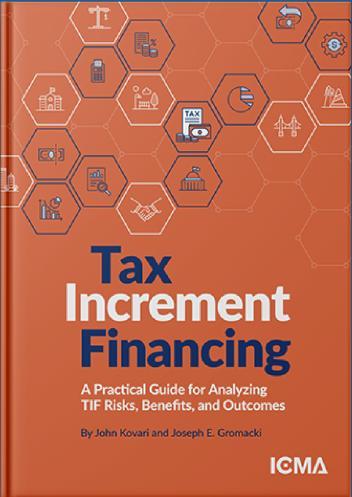

Strategizing and Embracing Change in Your Organization
BY DR. EVGENIY P. IVANOV
Conceptual meditations with Protagon and Antagon
In a fast-paced world like ours, change is a constant force that impacts every aspect of life, including the sustainable management and development of organizations. Reflecting philosophically on a problem, drawing from both personal and collective experiences, can help us methodically identify actionable strategies to navigate our organizations. Thinking in terms of theses and antitheses, weighing pros and cons, or simply posing and answering questions—these are just a few ways to make this approach practical.
In this article, I am offering a dialogue between two fictional characters, Protagon and Antagon, who serve as my trusted advisors when dealing with complex concepts and problems. This meditation will explore the topic of strategizing change.

DR. EVGENIY P. IVANOV works as research and analysis manager for the Virginia Beach Fire Department in Virginia, USA. Among his top professional and research experiences and interests is the application of conceptual and critical thinking through diverse analytical methods to complex concepts and problems. (eivanov@ vbgov.com)
Protagon: “Have you noticed how rapidly everything is changing and how fast-paced life has become? Change is everywhere! Everything changes, including ourselves and our organizations. So, how do we effectively navigate through change? That is the question!”
Antagon: “Change?! What is change to begin with?”
Protagon: “We are referring to change in general terms—everywhere and in everything. Change is constant; this is how life progresses, and so does your organization—constantly being shaped and reshaped by human behavior, inventions, new knowledge gathered, shifting (mis)beliefs or (mis) understandings, and sharing of best practices. We live in a very fast-changing world, and the same applies to any industry or organization, as they do not function in a vacuum. Organizations, like individuals, exist within a dynamic environment.
Consider how rapidly we gather information today compared to a few decades ago, and how huge the amount of it could be. In the past, ideas and information used to flow much more slowly—through books, articles, conferences, or personal encounters. Nowadays, we communicate almost instantaneously via chats and messaging. We gather huge amounts of information from digital sources online with the speed
of a mouse click. News from across the globe reaches us in real time. This speed leaves us with less time to process and react, as we are already in the midst of whatever is unfolding.”
Antagon: “How can we survive in such a hectic world and keep up with this pace of change?”
Protagon: “The world has always been under constant change since the very beginning. So, there’s no change to that at least. Still, we must improve our ability to think strategically about change. I’m referring to change that would allow for some deliberate preparation or strategic planning, not to any action that requires an immediate reaction.”
Antagon: “So, we should strategize our response to change? How shall we do that?”
Protagon: “The same way we deal with any other major problem—through analysis, forecasting, and developing courses of action that inform our strategic planning and decision-making. Strategic planning— both the process and the strategic plan as its major outcome—is the best example of strategizing our response to change. Most organizations have some sort of analytical and business intelligence capabilities to help with those processes.1 Some might have an analyst; others might even have a whole team of them, such as strategic analysts, performance and accountability analysts, operational research analysts, management analysts, etc.”
Antagon: “What about organizations or departments that do not have dedicated analysts?”
Protagon: “Even in such cases, thorough analysis must be performed, either by an ad hoc internal team or by outsourcing analytical capacities. It is best to have analysts conduct the analysis, as they are professionals in their field, supporting the process methodologically and ensuring rigor. It is not always safe to rely only on someone’s ‘gut feeling,’ as this provides no scientific and methodological rigor, may not be data-informed, and ultimately may lead to a biased approach from the start.”

Antagon: “I see. We can institutionalize our response to change through strategic planning, including the development of strong analytical and forecasting capabilities, or by outsourcing them. But how shall we address the human factor? How can we motivate individuals to embrace change and help institutionalize lessons learned?”
Protagon: “There is a constant continuum of transactions between the institutional level and the workforce. People create the culture of their organizations, and it gets formalized at the institutional level through formal rules, such as standard operating procedures and policies. The culture may be one that embraces change or one that is resistant to it. These rules begin to shape the actions of those who created them. Change is constant, and our standards should also be updated to stay relevant. Still, standards and rules shape our actions, but we shape them first. Overcoming resistance to change at the institutional level begins at the individual level. We sometimes catch ourselves saying, ‘We do it this way because that’s the way we’ve always done it,’ referring to culture or rules, both written and unwritten. That is valid until we decide to rethink (as Adam Grant encourages in his book, Think
Again) the rules in a way that better matches our current and future needs and accounts for triggers such as change. This can be done through interpersonal transactions, such as staff meetings, manager chats, roundtable discussions, surveys, etc.”
Antagon: “Tell me more about how we can get our workforce more involved when dealing with change.”
Protagon: “The best approach is to encourage members at all levels of the organization to get involved—not only by performing their regular duties but also by volunteering for additional tasks. This creates a win-win scenario: the organization benefits from improvements, while the volunteering members showcase their valuable skills, opening doors for career advancement.
For instance, if someone presents a process improvement idea, collaborate with them to turn that idea into action. By doing so, they actively contribute to solving a shared problem, gaining a sense of ownership in the process. Moreover, this individual could become an ideal candidate for roles such as your next process improvement program manager or another position that aligns with their strengths and skill capacities.
Take Kyle, for example, a young professional who proposed a solution for digitizing and improving the standard operating procedure (SOP) development and update process in his department. He took the initiative, became the SOP program manager, and earned a promotion. As professionals like Kyle continue to develop their problem-solving and leadership skills, they could eventually become your next division manager or even the head of your organization.”
Antagon: “But how do we find and motivate those people to get involved and help navigate through change?”
Protagon: “By knowing who we are working with. Our team members, regardless of rank or position, may have other knowledge, skills, or competencies they acquired in past careers or continue to practice elsewhere. ‘Knowledge is the new currency,’ as Jim Kouzes and Larry Posner note in their book, The Leadership Challenge. To better understand this, the concepts of multiple identities and transferable skills are useful.2 We all have multiple identities or roles. We are not just members of our organizations; we are also someone else somewhere else—a community association leader, consultant in a firm, adjunct professor, thought leader in another industry or a church, book author, sports coach, handyman, mentor, advisor, or trainer. The list of possible roles and identities is endless, and so are the skills that workforce members bring with them when they come to work. Many of our skills are transferable, such as communication skills, analysis skills, presentation skills, etc. That is my personal experience, and I hope it is yours, too.
Change can be a huge risk if left unmanaged, but strategized change equals improvement and thus progress.
Leaders and managers at all levels must know their team members well and identify their other identities and skill sets to insource their capabilities, providing opportunities for those members to contribute, shine, and feel self-actualized (the highest need in Abraham Maslow’s Hierarchy of Needs).3 Encouraging them to volunteer in processes and activities that they are passionate about would help improve their integrity with the organization and thus improve their work motivation and performance.”
Antagon: “Aren’t there risks that come with change?”
Protagon: “Yes, there are risks, as change has a dualistic nature—it can be a risk, but also an opportunity. Change can be a huge risk if left unmanaged, but strategized change equals improvement and thus progress. Inclusion
of as many members as possible, not only in providing the key services or mission of the organization but also in strategizing and improving that service and mission, regardless of rank or position, is key to empowering them as owners of that service. The change we have meditated on is not just any change, but the one that is strategized, not chaotic. It is the change that leads to progress, improvement, and ultimately a better service to our society.”
In conclusion, the above meditations advocate for a more complex approach toward the concept of change. We can insource our strategized response to change by fostering volunteerism among the members of our organizations and by capitalizing on the skill capacities carried by their multiple identities. We can also outsource that response by exploring multiple venues for collaborative and out-of-thebox thinking, such as centers of excellence, associations, conferences, staff exchange programs, and much more. Above all, we must empower ownership among our team members and thus promote inclusion in strategizing our unified response to change, ultimately ensuring its sustainability.
ENDNOTES AND RESOURCES
1 https://www.firefighternation.com/firerescue/is-your-department-businessintelligent/
2 https://www.theforage.com/blog/skills/transferable-skills#h-transferableskills-defintion
3 https://psycnet.apa.org/doiLanding?doi=10.1037%2Fh0054346
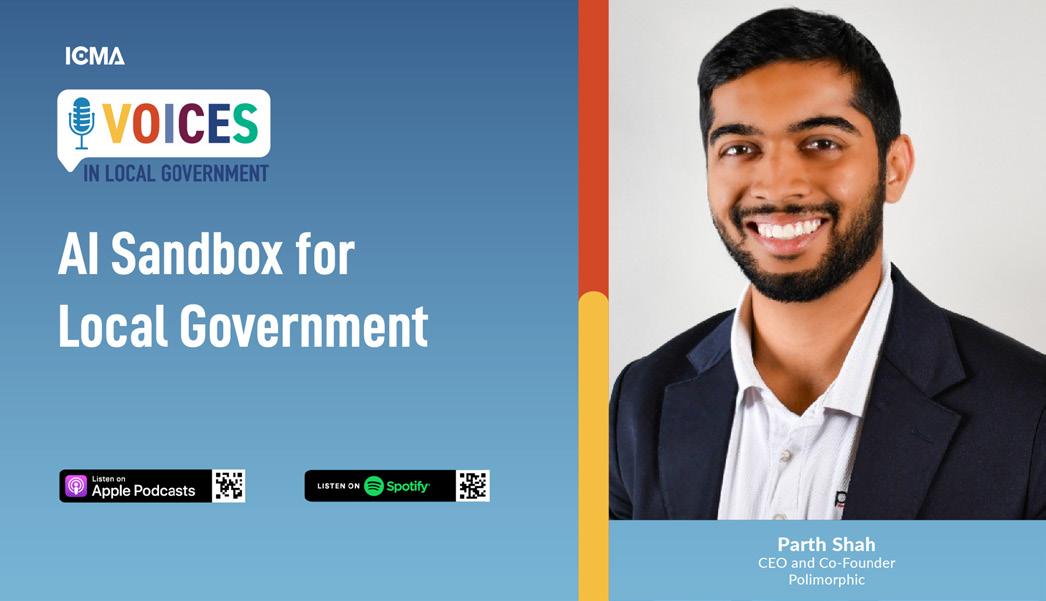
Technology Policies for Your Community
When technology touches nearly every aspect of your city or county, careful policy considerations are in order.
BY MARC PFEIFFER (WITH SOME HELP FROM SOME GENERATIVE AI APPLICATIONS)
As a local government leader, technology affects more than just your internal operations. Many tech issues directly impact your residents and need your attention.
Big Picture Issues
Technology touches many important areas, including community-wide concerns like climate change and diversity; local matters like economic growth, resident involvement, “smart cities,” and town planning; and management questions, including ethical and legal issues that affect how government works.
Which policies matter most depends on your community’s unique makeup—who lives there, what resources you have, and your specific goals. Technology can influence which policies you discuss, what goes in those policies, and how you create and implement them.
You can search online for examples of how specific technologies affect policies in other communities. AI chatbots can also help you write policies, understand different technologies, and related issues.
Connecting with Residents
If your community has lower-income residents, address the “digital divide”—the gap that makes it harder for some people to access digital services. Consider policies that provide access to computers, internet connection, and digital skills training.
Make sure your online resources work for everyone. Create digital platforms that encourage residents to participate and provide feedback on decisions. Use data analytics and visualization tools to show government information clearly. This supports transparency and accountability in government operations.
Have clear policies about open data and sharing information with the public. This includes handling public records requests, using social media and other online platforms, offering language translations, and helping people with vision problems. This also means making websites work on all devices (“responsive design” in tech speak).
Growing Your Local Economy
While your role might be limited, you can work with state or county officials on policies that support digital infrastructure and technology hubs, and partner with schools and businesses to provide technology training. Support new businesses through programs like incubators and startup assistance.
Creating a Smart City
Today’s smart cities use data to make better decisions. Consider adding sensors and data tools to improve planning and infrastructure. Use data to make better decisions and work with tech companies and researchers to test new traffic and waste management solutions. More technologically advanced places can consider “digital twin” technology to support planning, utility, and traffic management. These tools promote innovative, sustainable, and resilient communities.
Handling Management, Ethical, and Legal Questions
Create a committee of employees and residents to address these issues. Topics might include:
• Guidelines for responsible technology use.
• Privacy concerns and avoiding bias in automated decisions.
• Following relevant laws about technology and data.
• How new technologies affect municipal services.
• Barriers to using new technology.
• Technologies that help people with disabilities.
• Long-term strategies to keep up with technology changes.
Addressing Climate Change
Many towns are tackling environmental challenges through local and regional advocacy groups. Your policies might include renewable energy sources, improved transportation systems, electric vehicle adoption, and using sensors and data to monitor environmental conditions.
Every place will approach these ideas differently based on local needs and priorities. Consider your demographics; available resources (budget, staff expertise, infrastructure); and community goals, such as sustainability, economic development, and quality of life.
The key is to stay informed and use technology to better serve your residents. Regular assessment of technology needs and impacts will help you develop policies that truly benefit your community.
Human author’s note: AI chatbots were used to help develop and write this article. One chatbot was used to develop a bullet point outline of types of policies. The author added relevant commentary to establish a draft article. A second chatbot took that article and reduced the number of words. The author then edited that into the final narrative.

MARC PFEIFFER, an ICMA Life Member, is a marginally retired New Jersey town administrator and state agency manager. He is currently a senior policy fellow and assistant director at Bloustein Local, a unit of the Center for Urban Policy Research at Rutgers University. (marc.pfeiffer@ rutgers.edu)



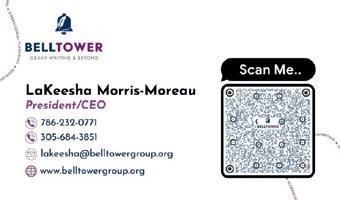









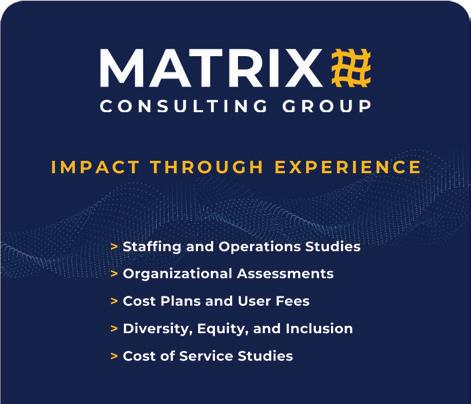

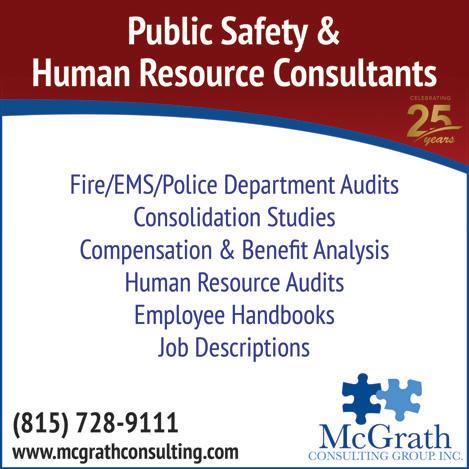
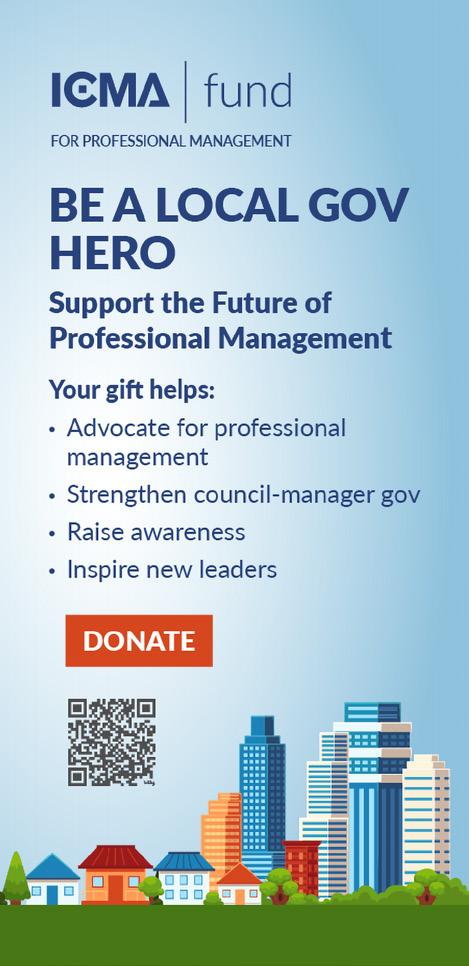
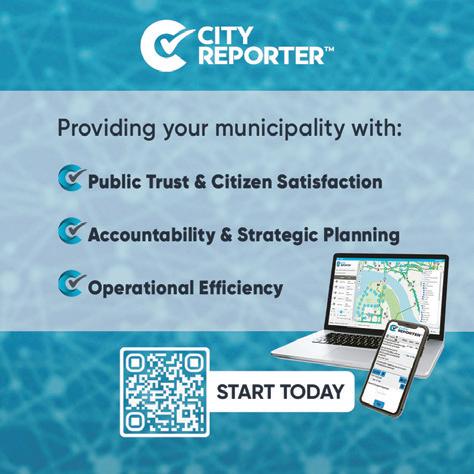








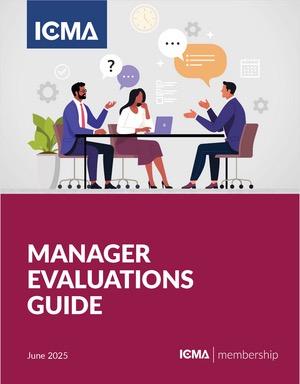


Maximizing Student Loan Repayment Benefits with


Join Savi and ICMA on the first Thursday of every month for a webinar on tackling student debt for local government employees. Learn how Savi’s proven approach simplifies Public Service Loan Forgiveness (PSLF) and empowers employees to achieve lasting financial security. Don’t miss this chance to bridge the information gap and support your team’s financial well-being. Scan the QR Code below to registe r!







